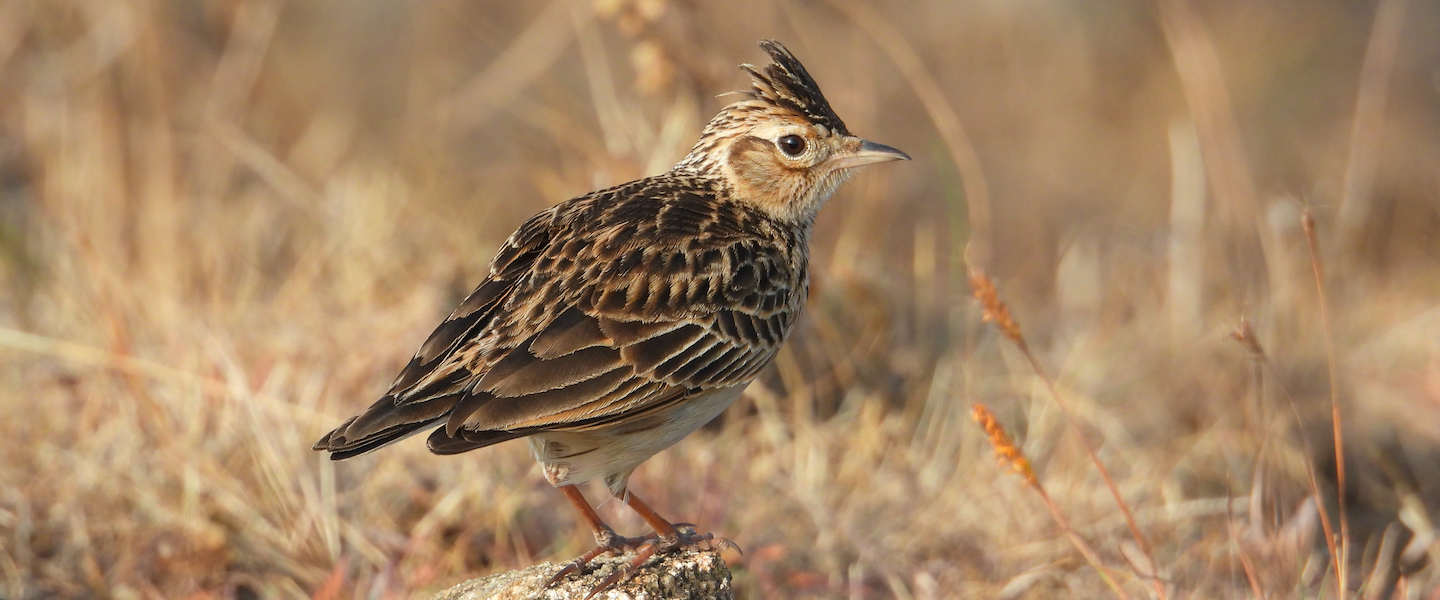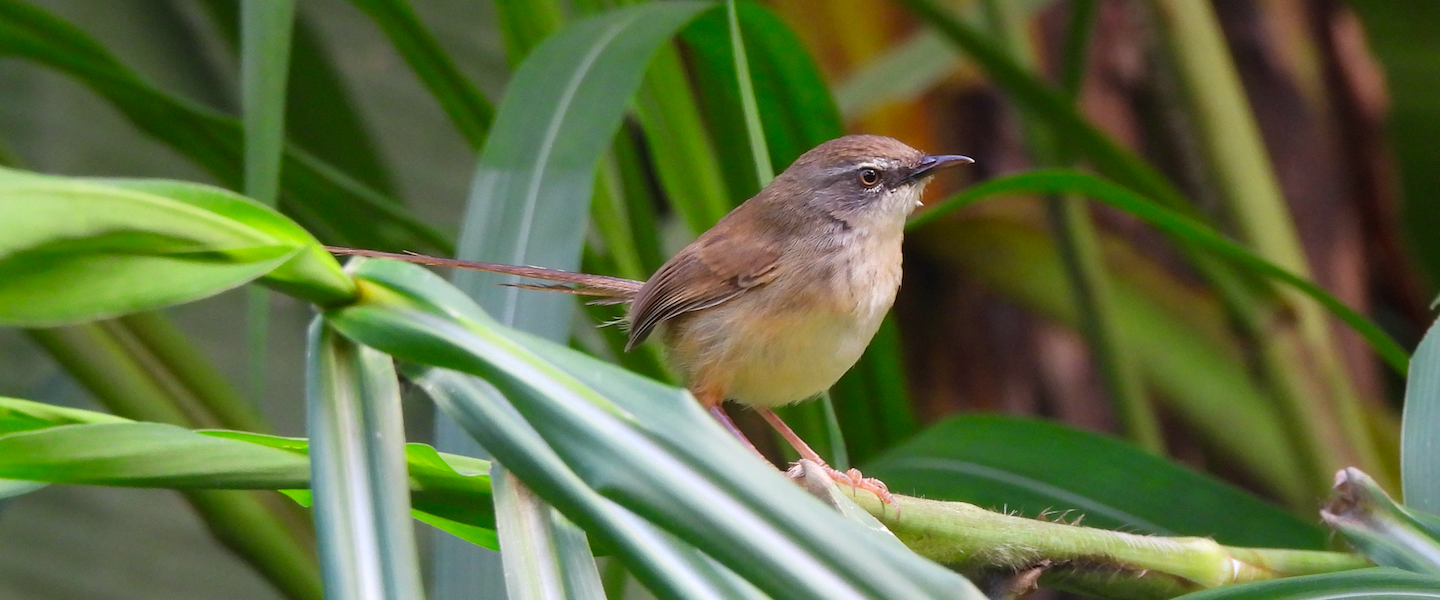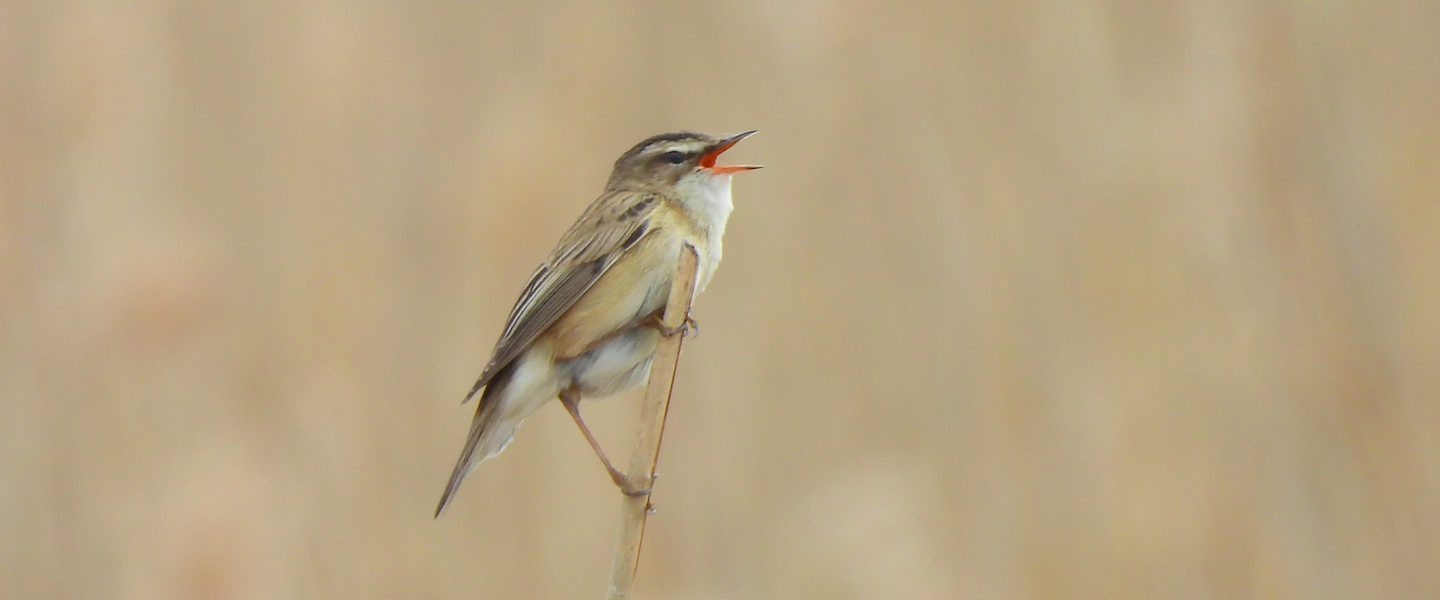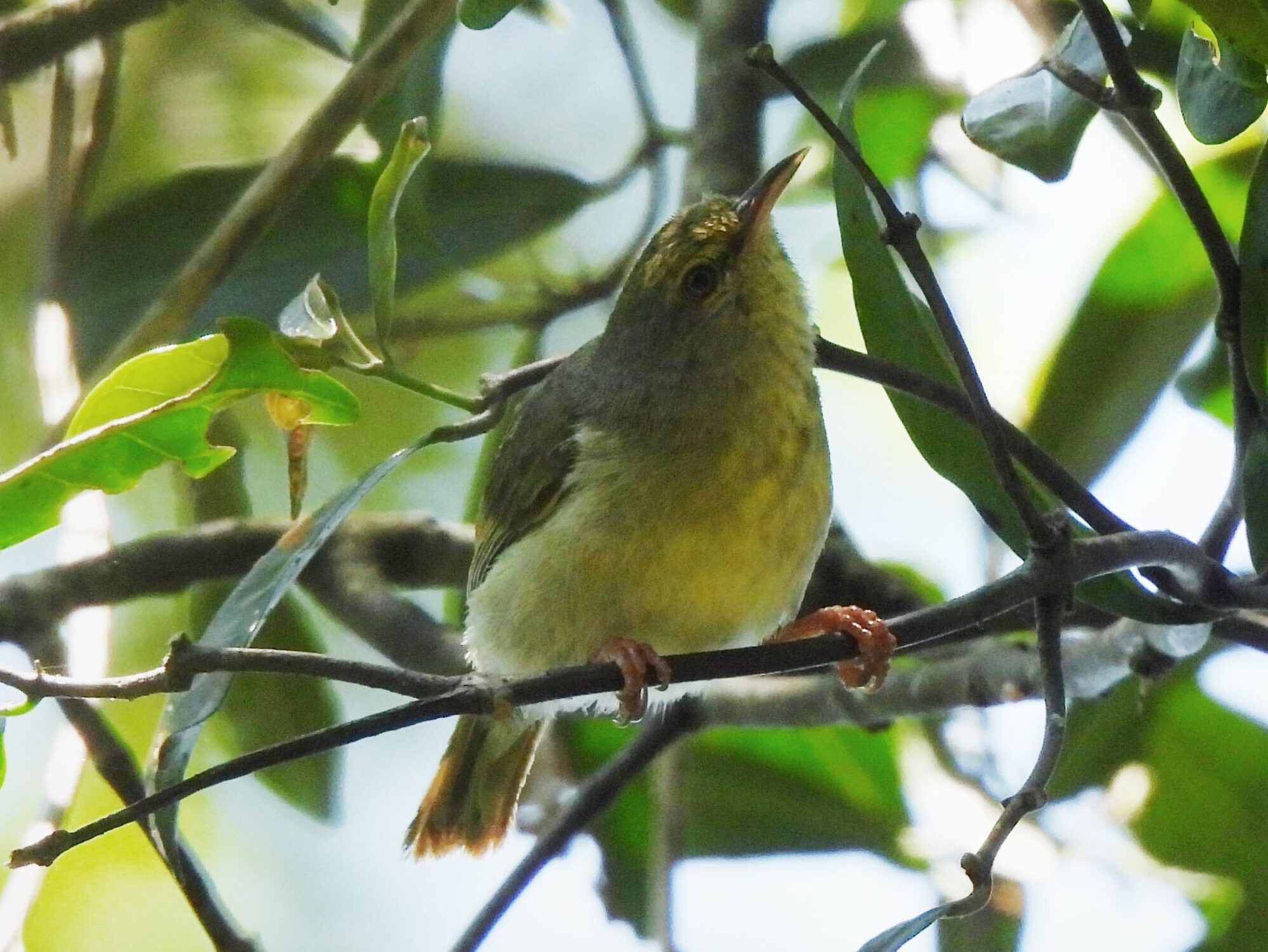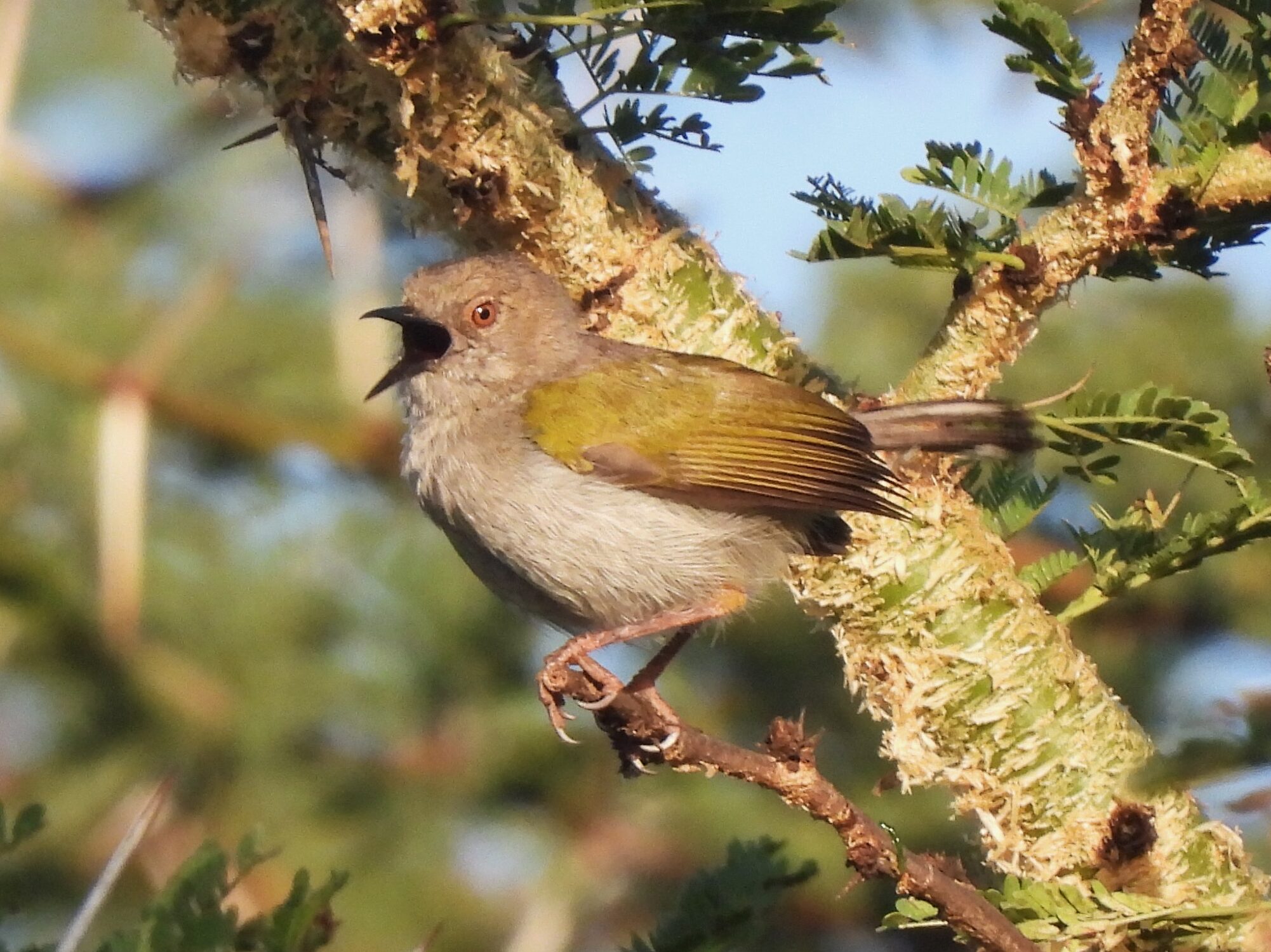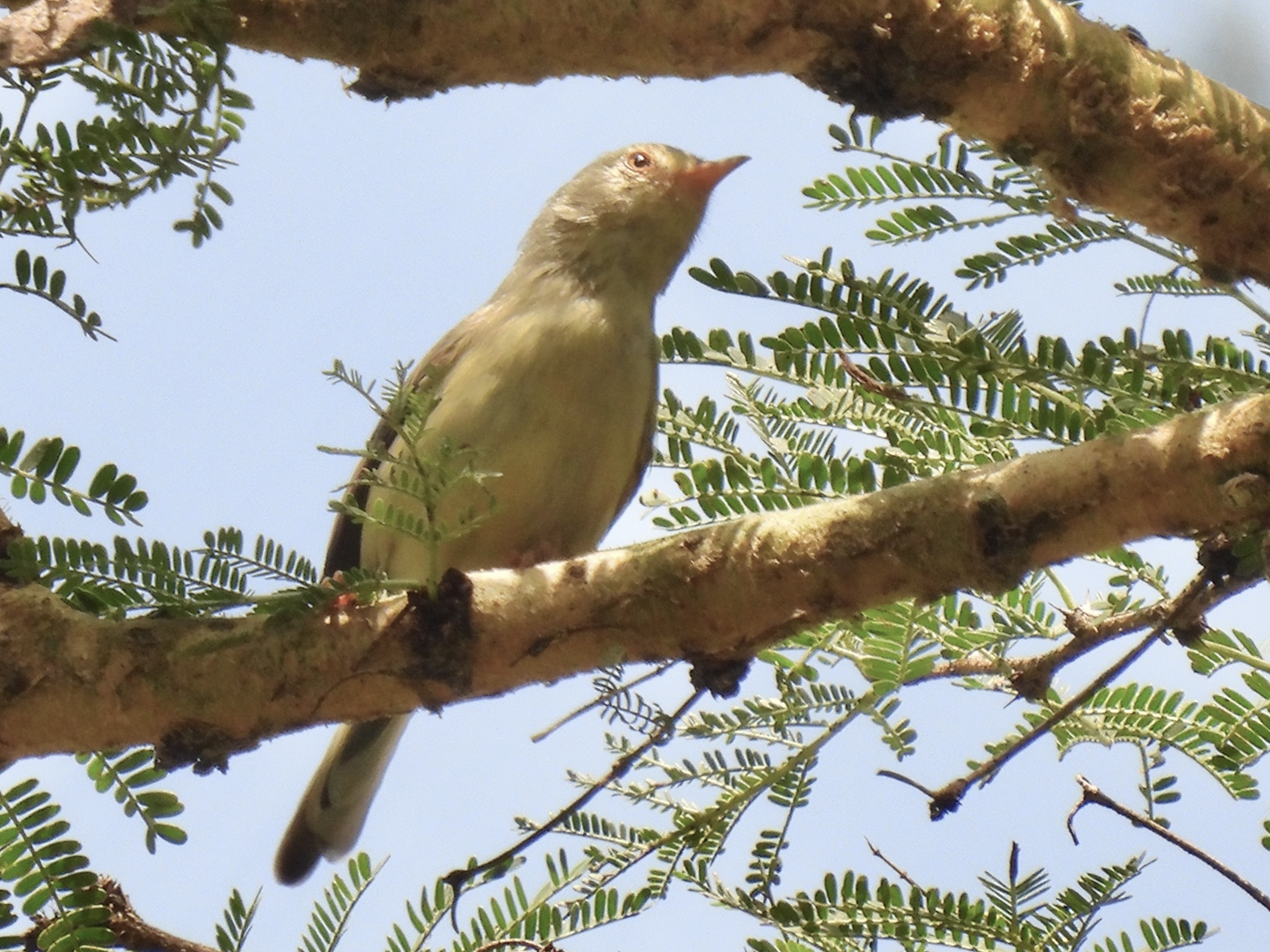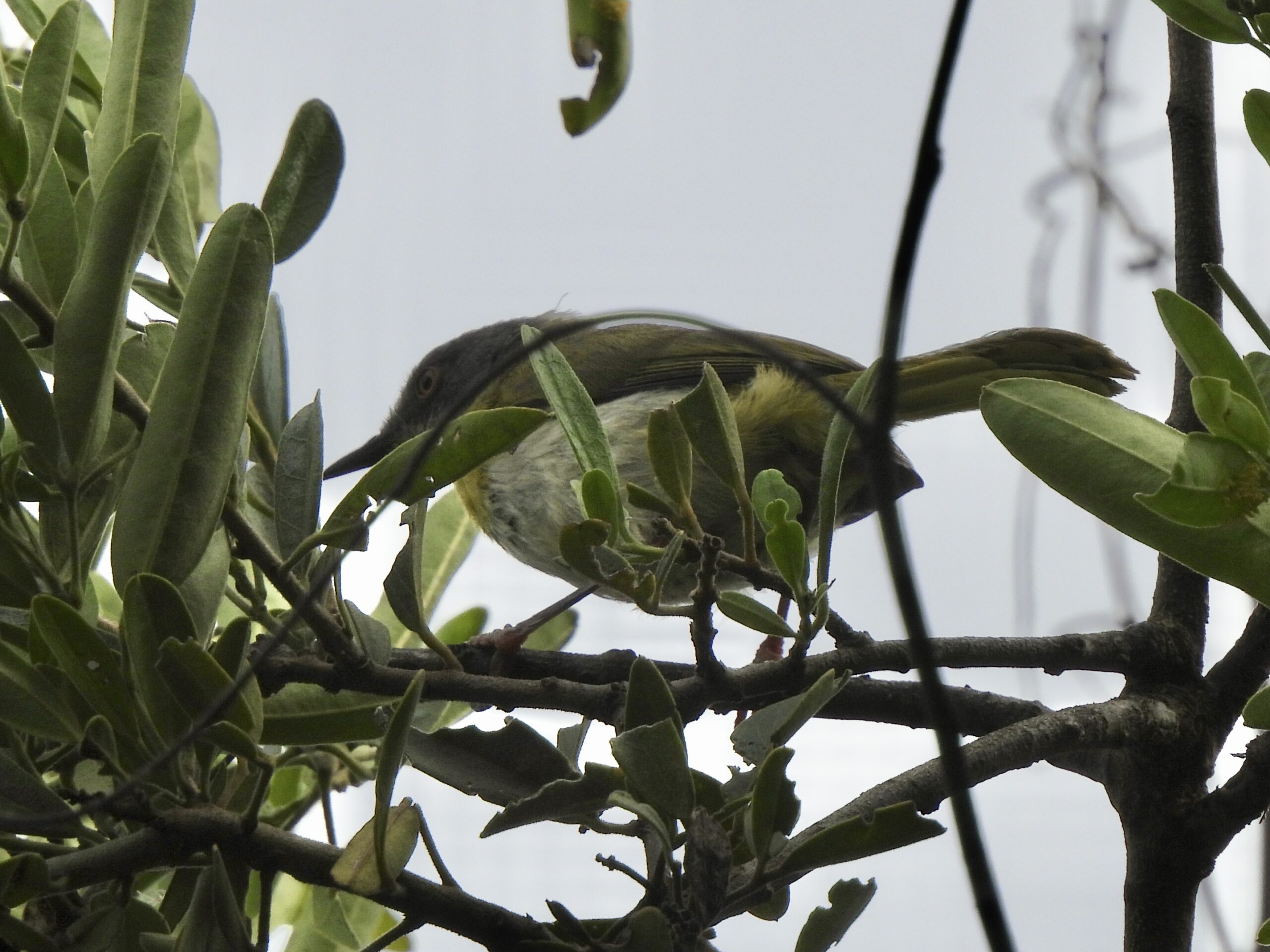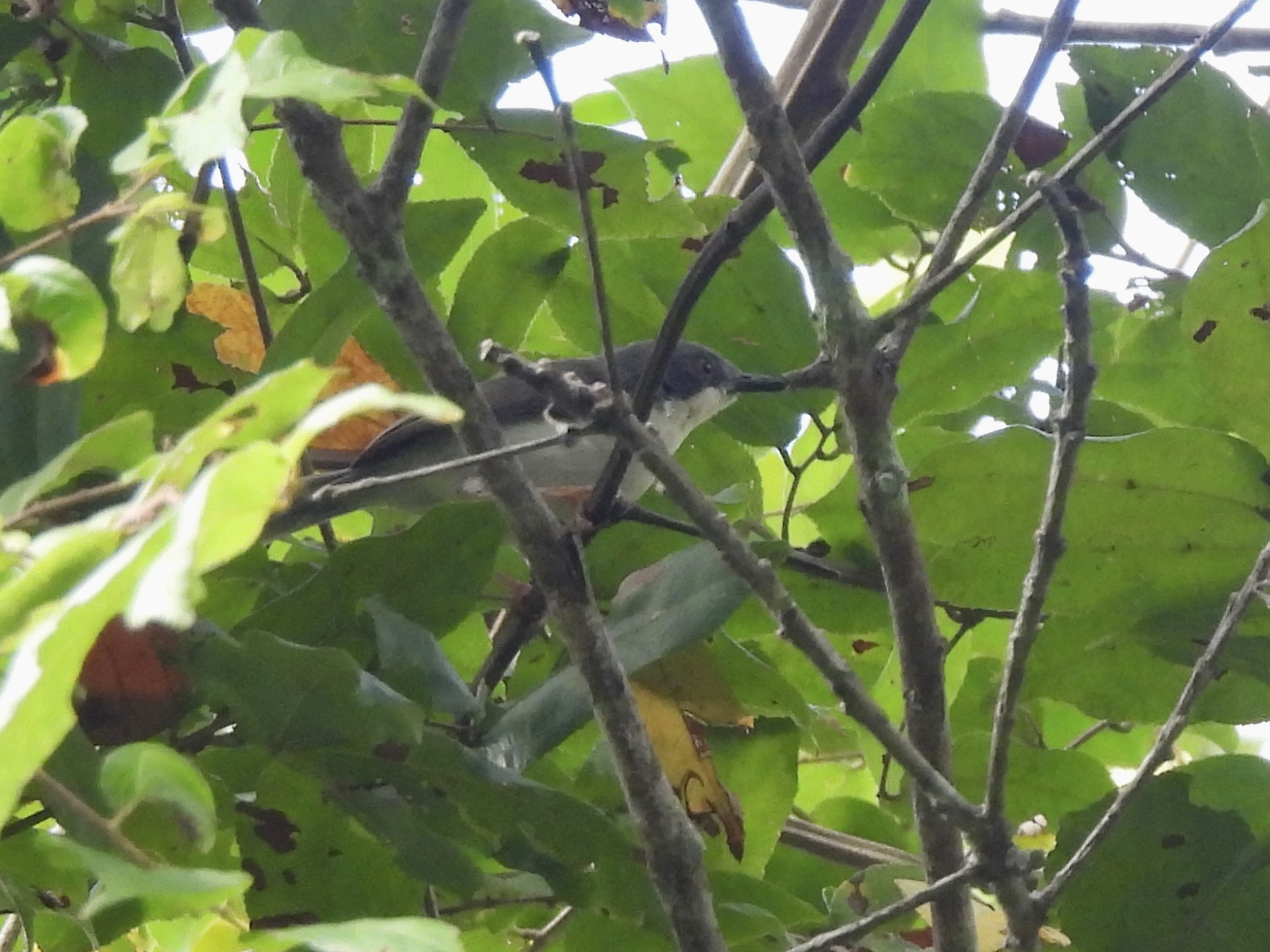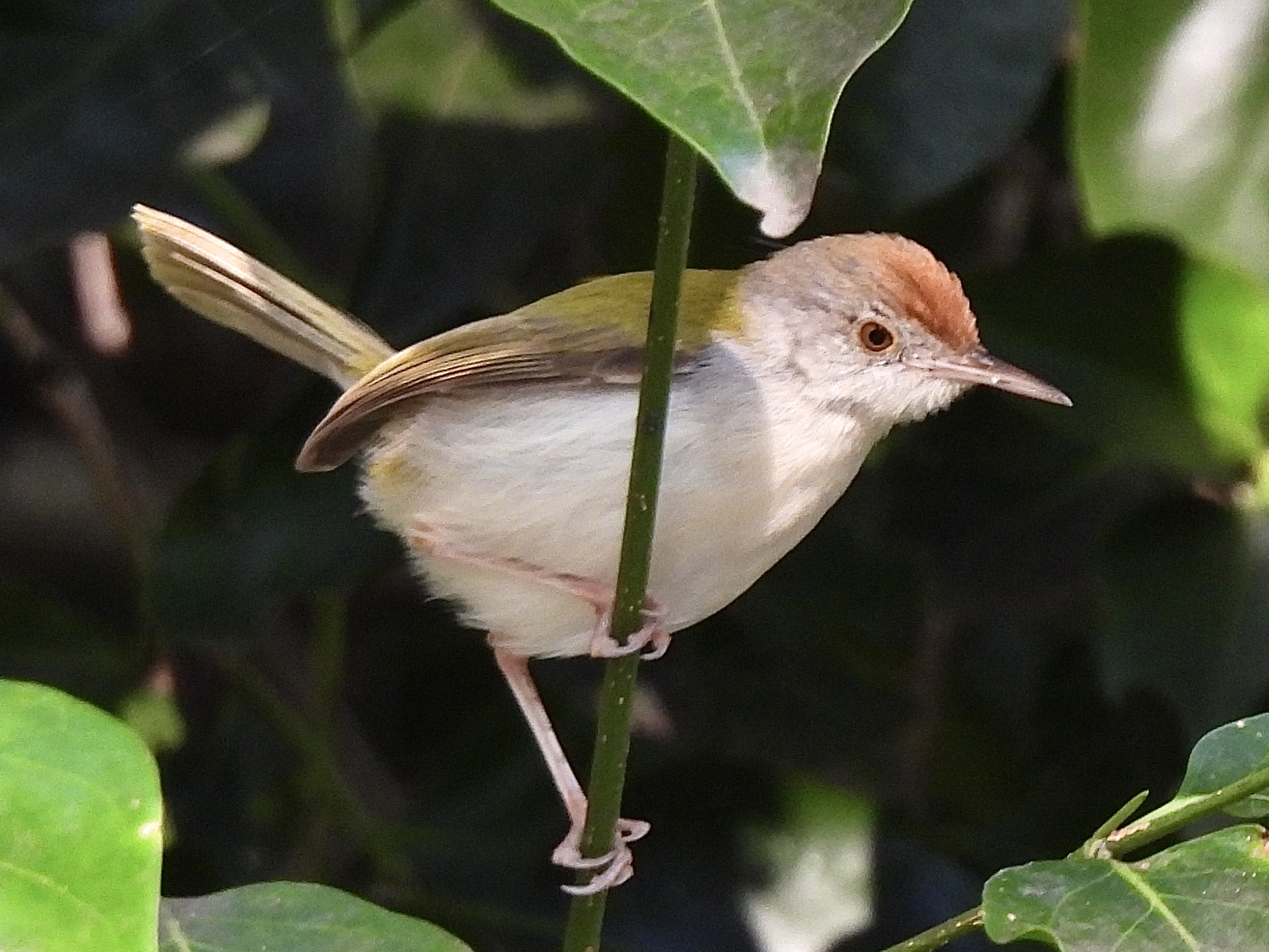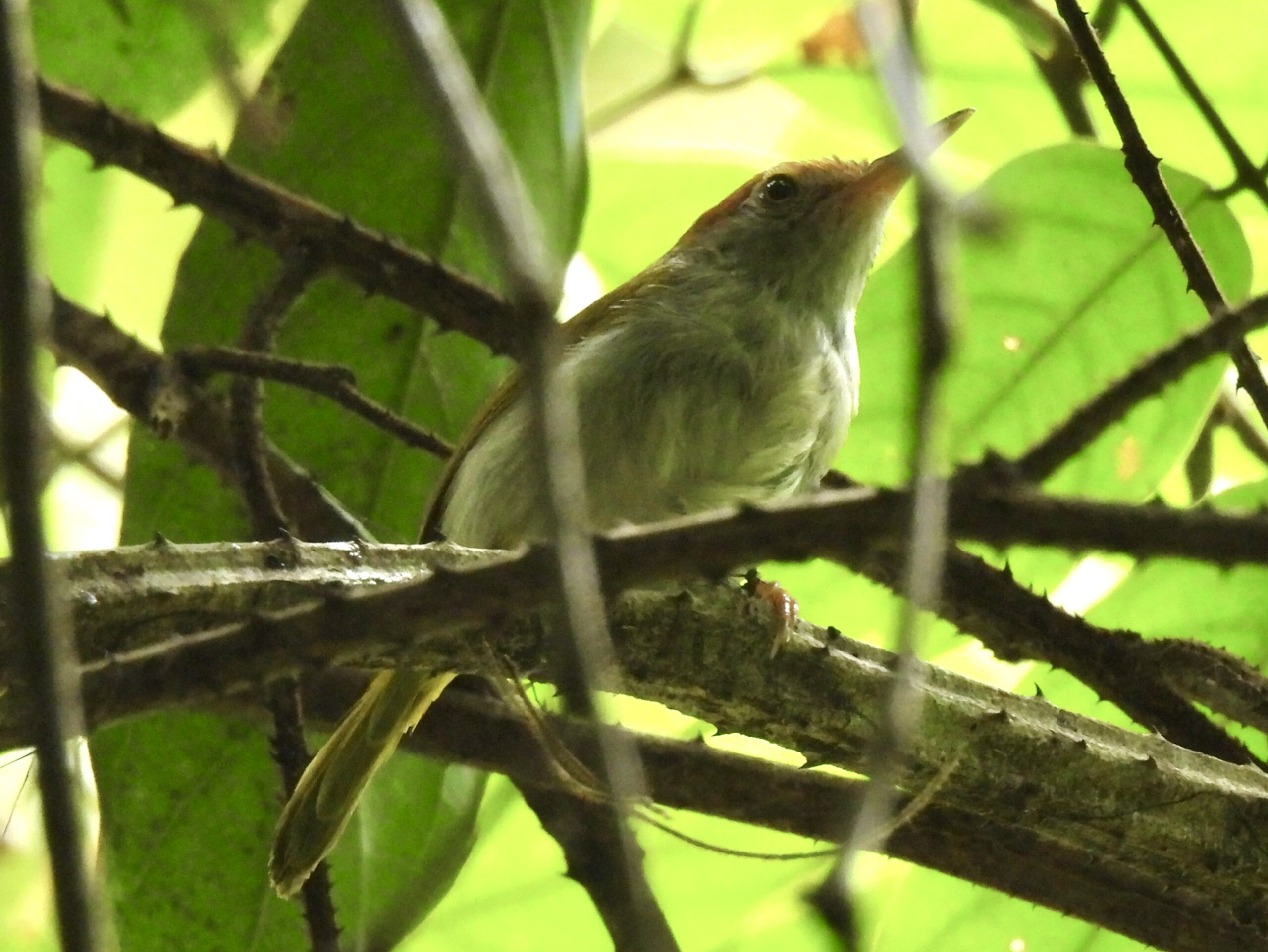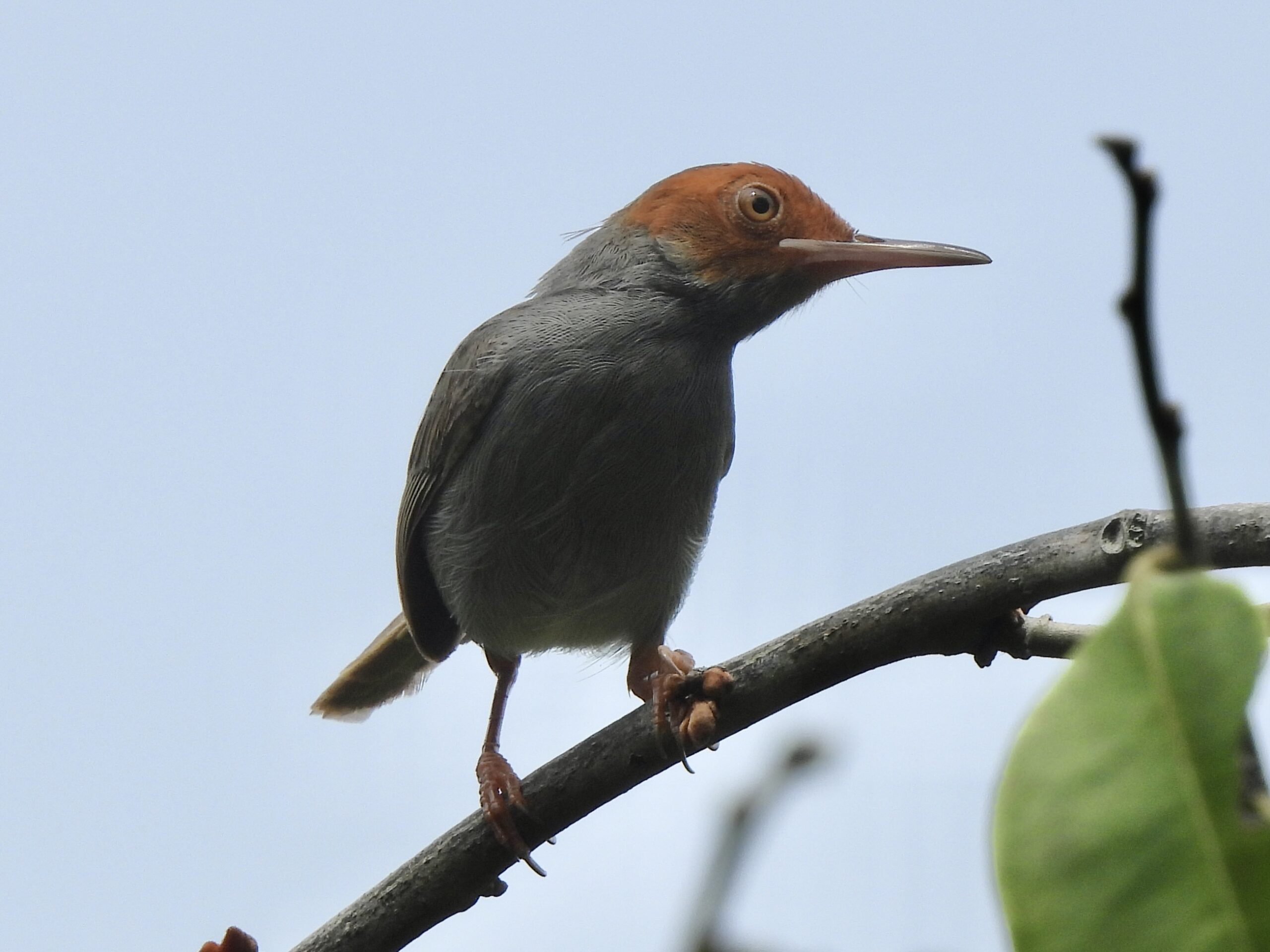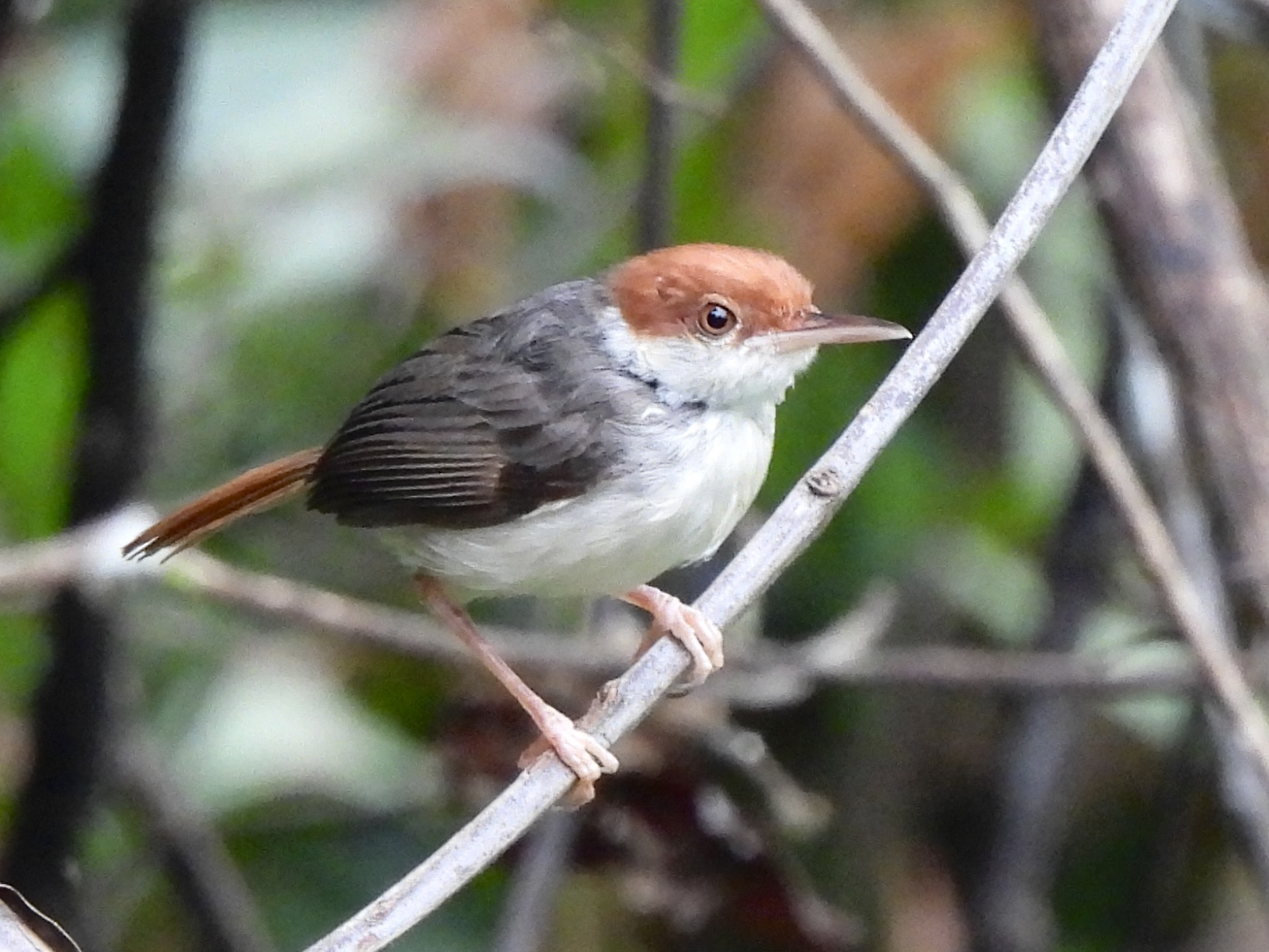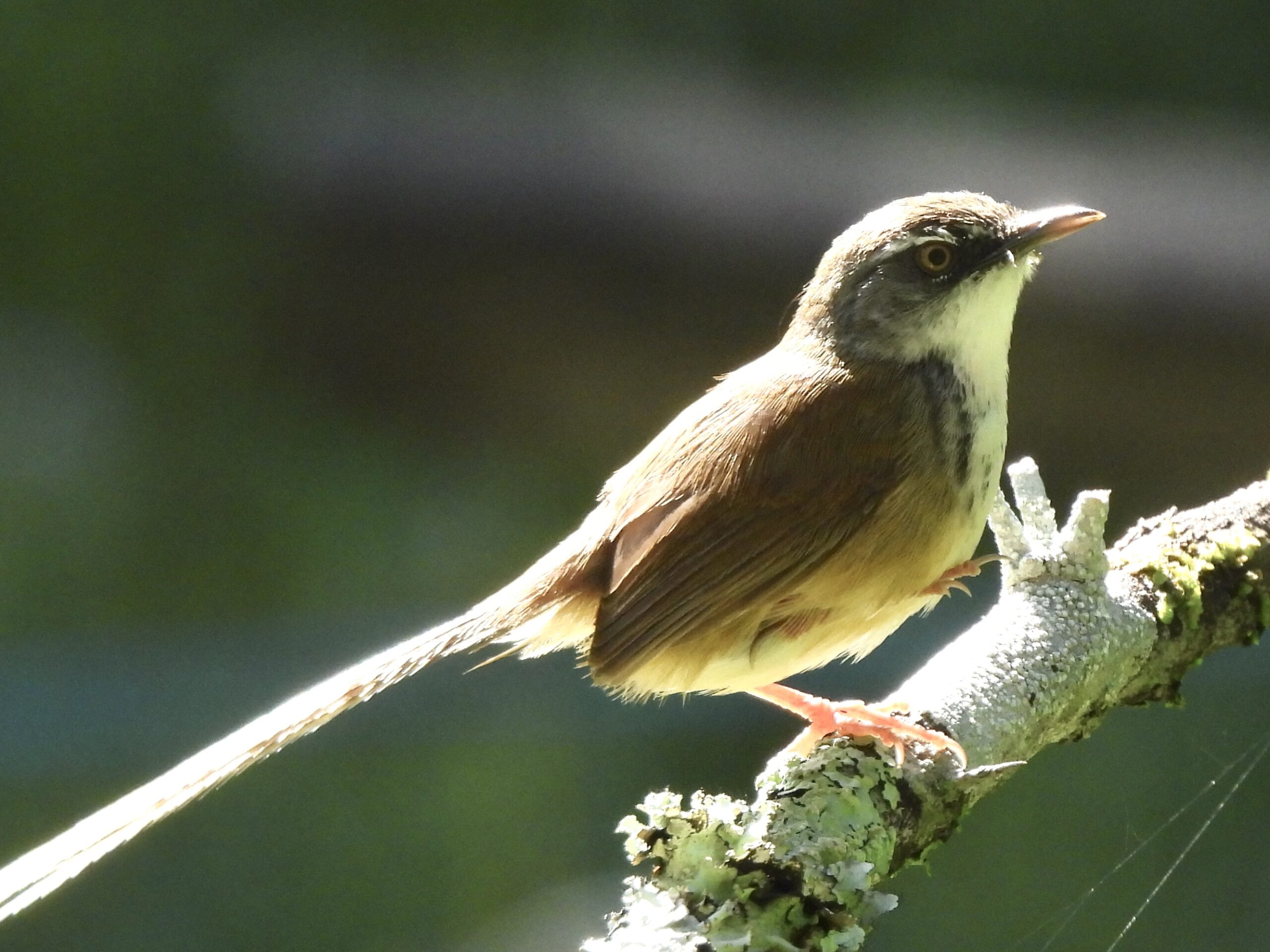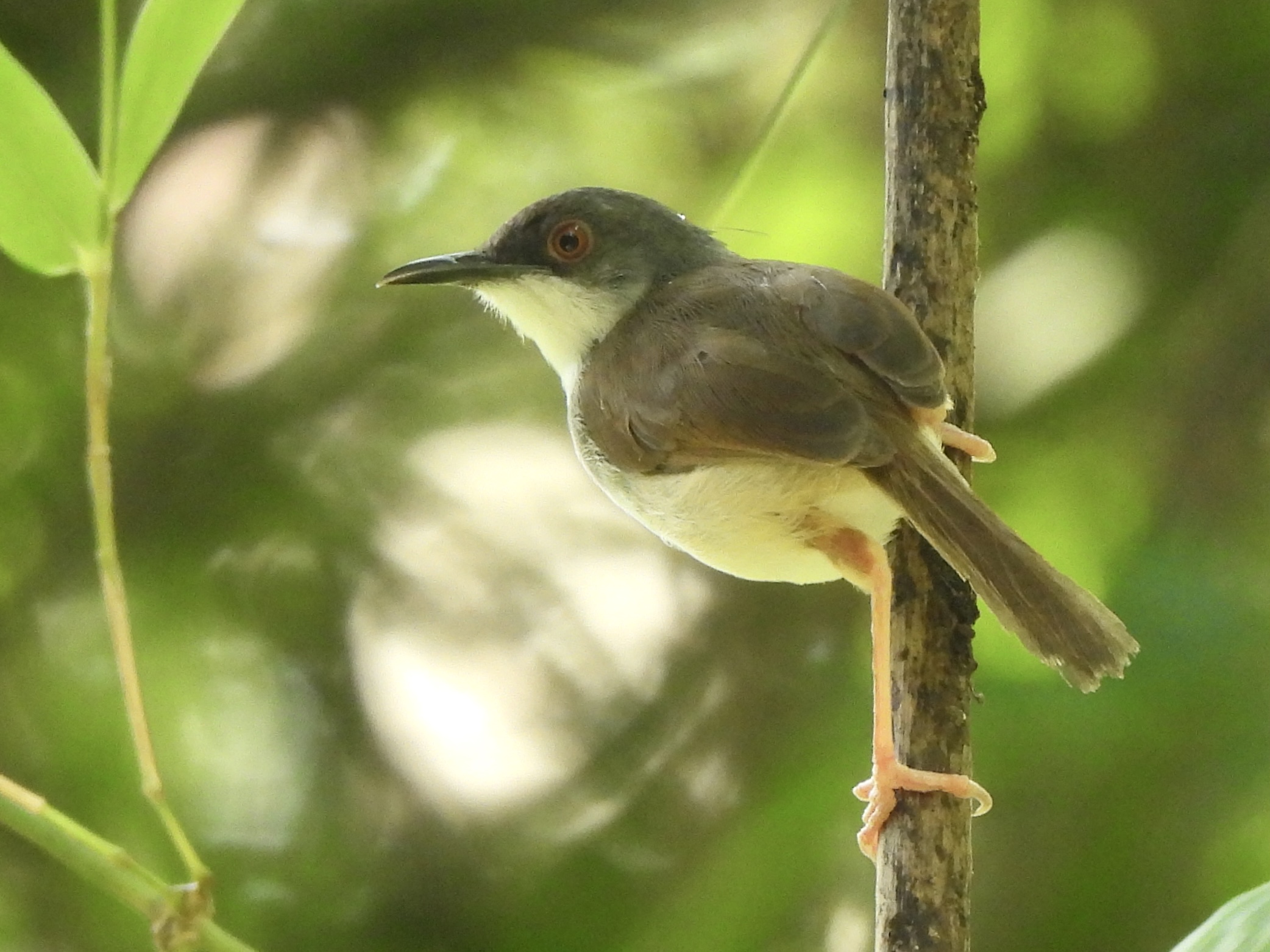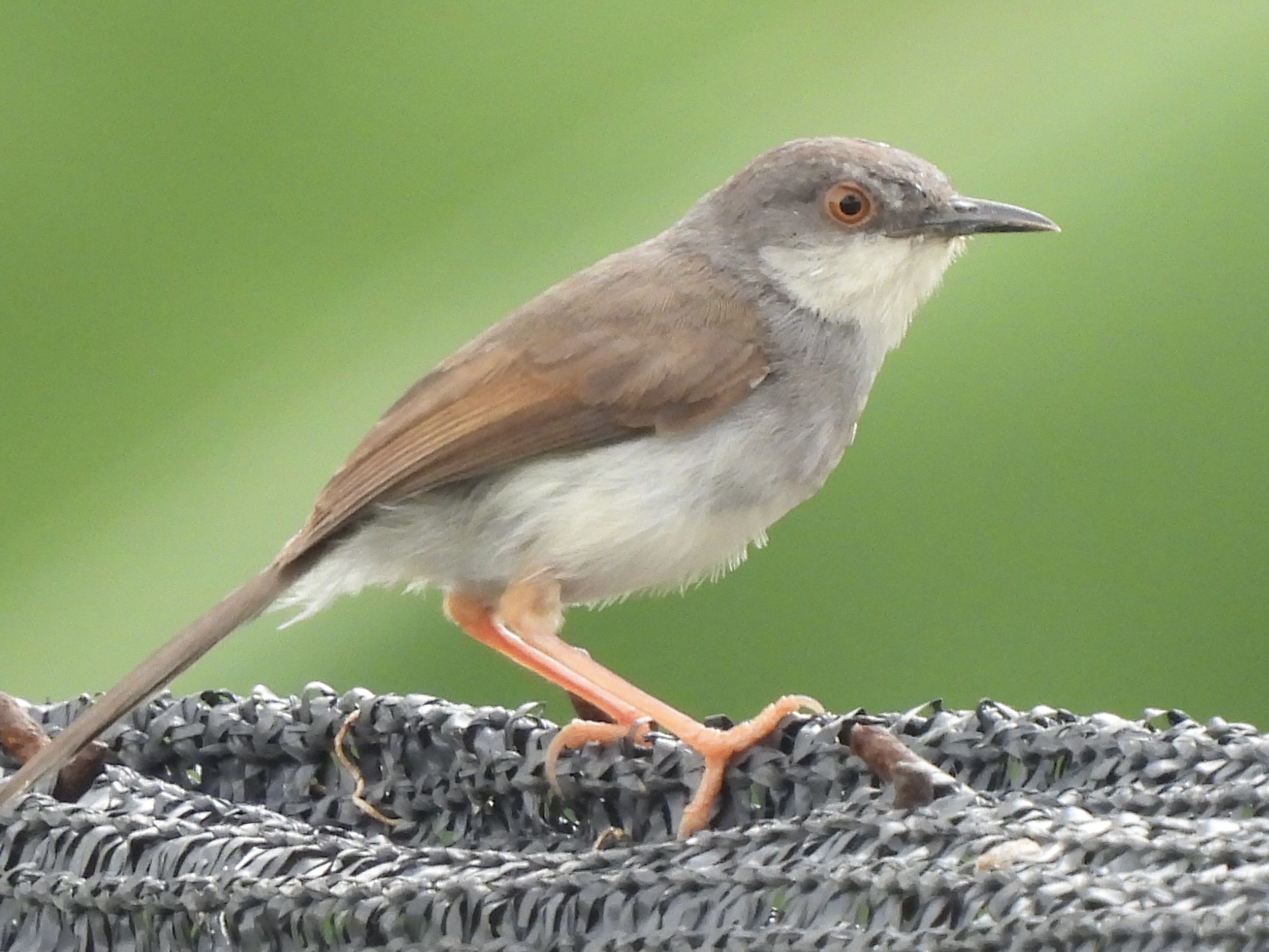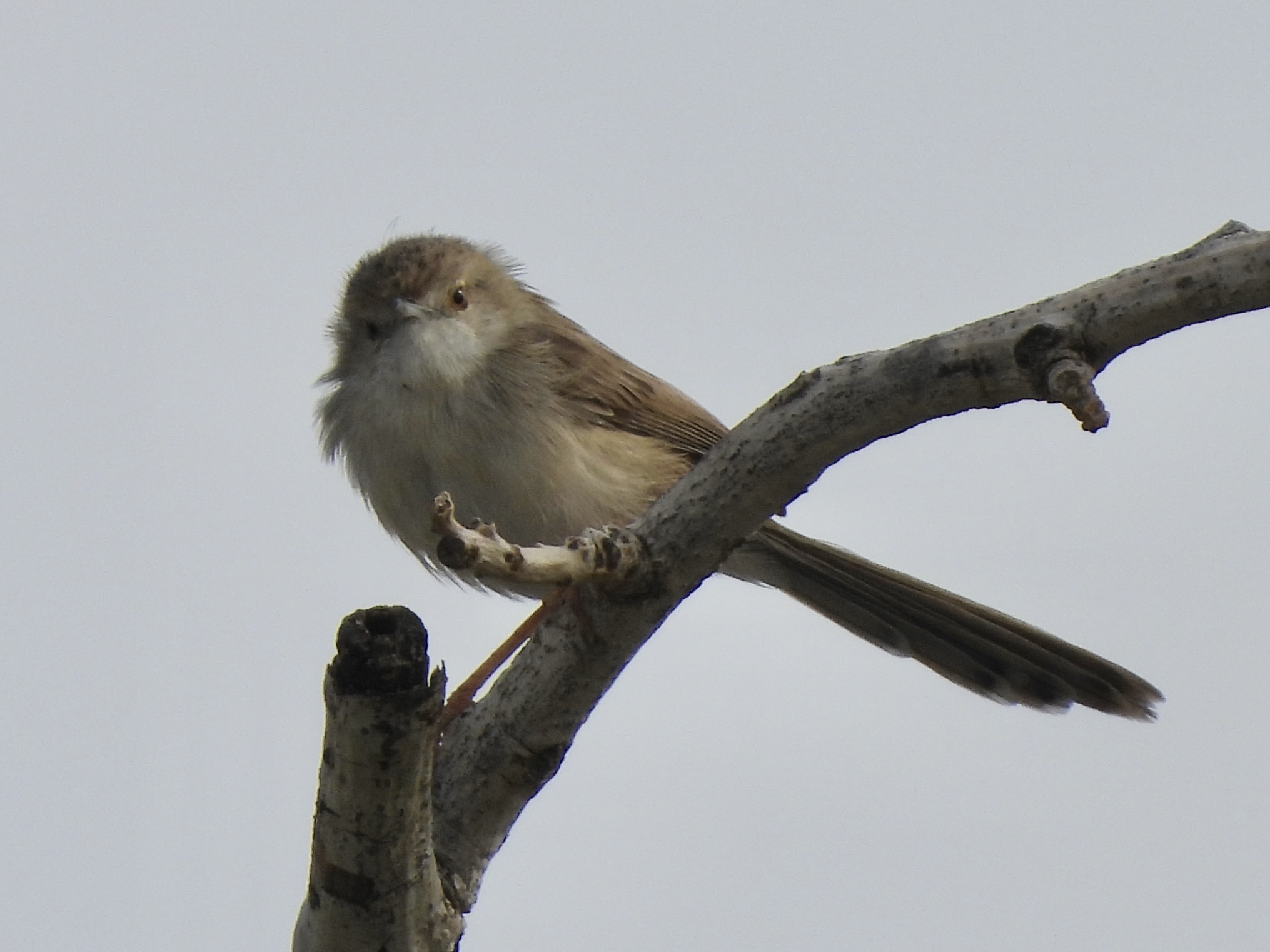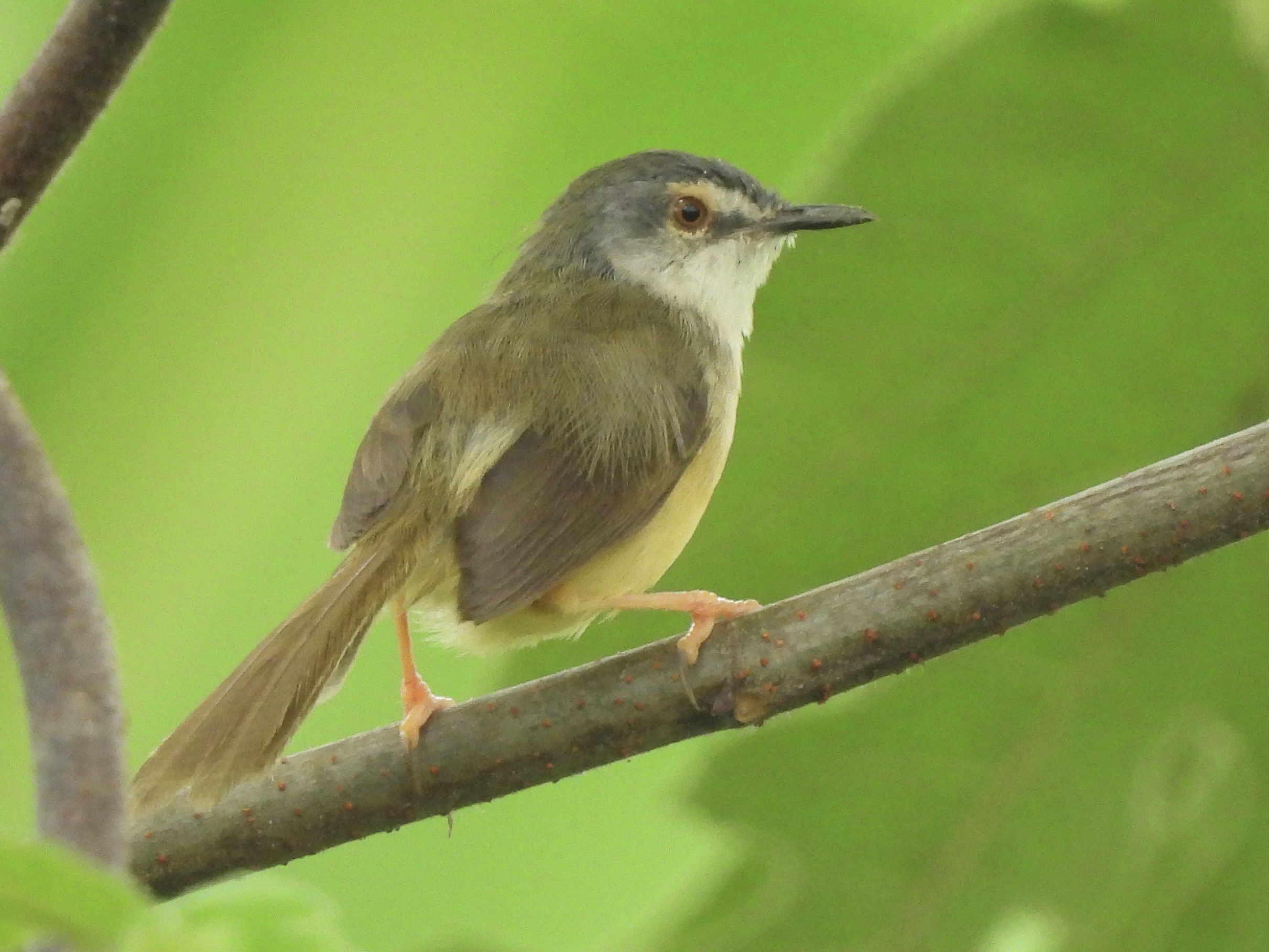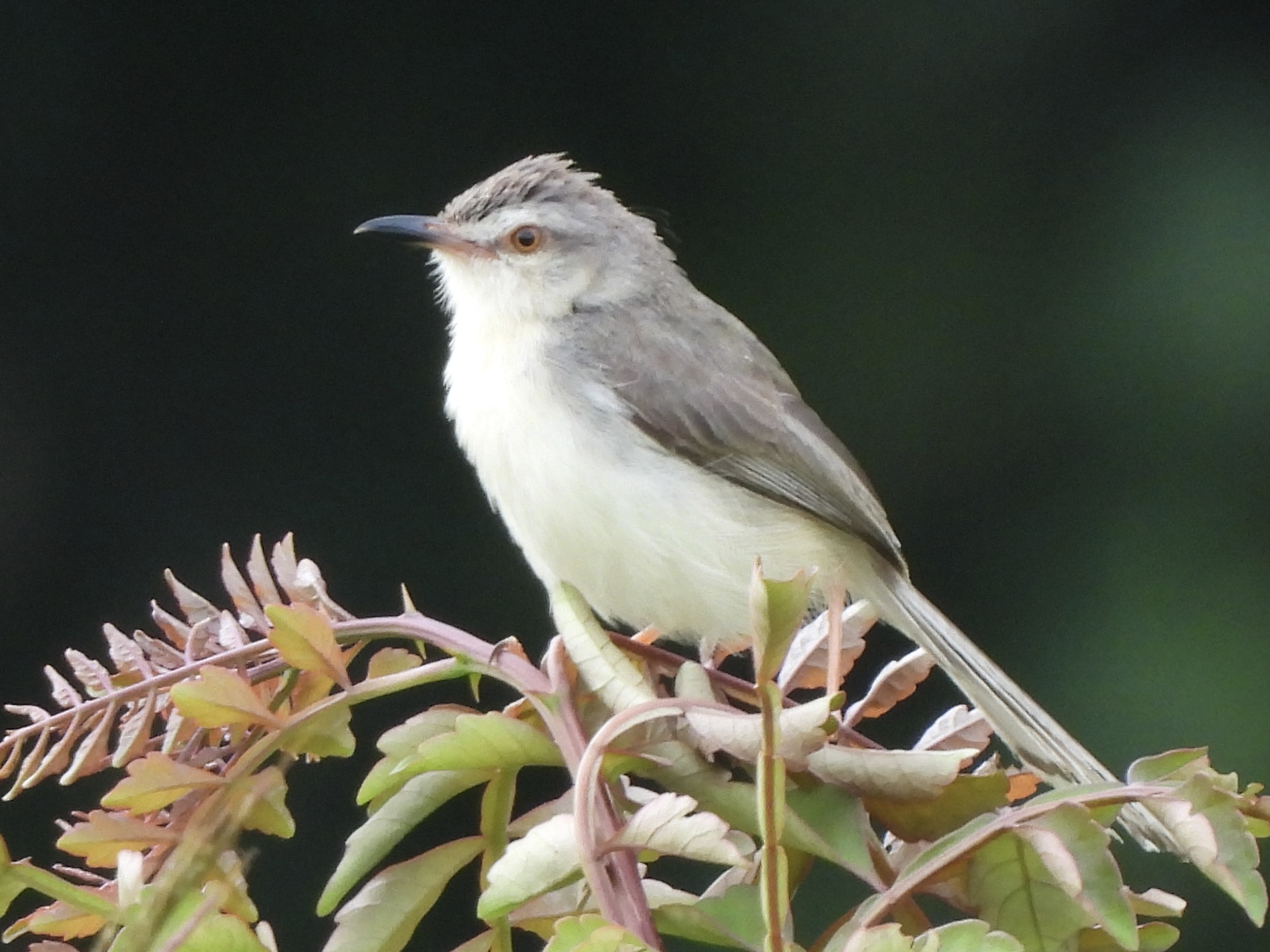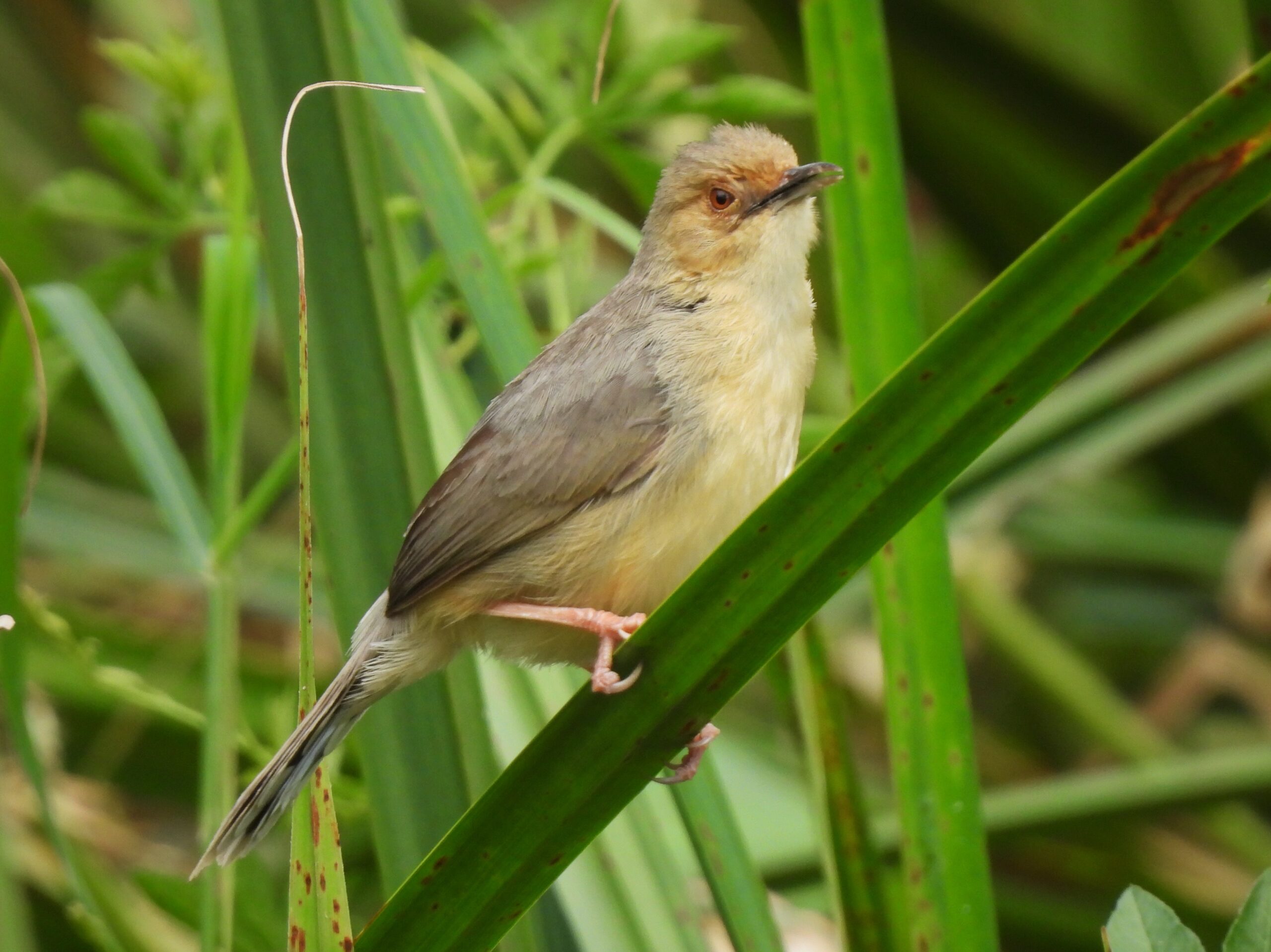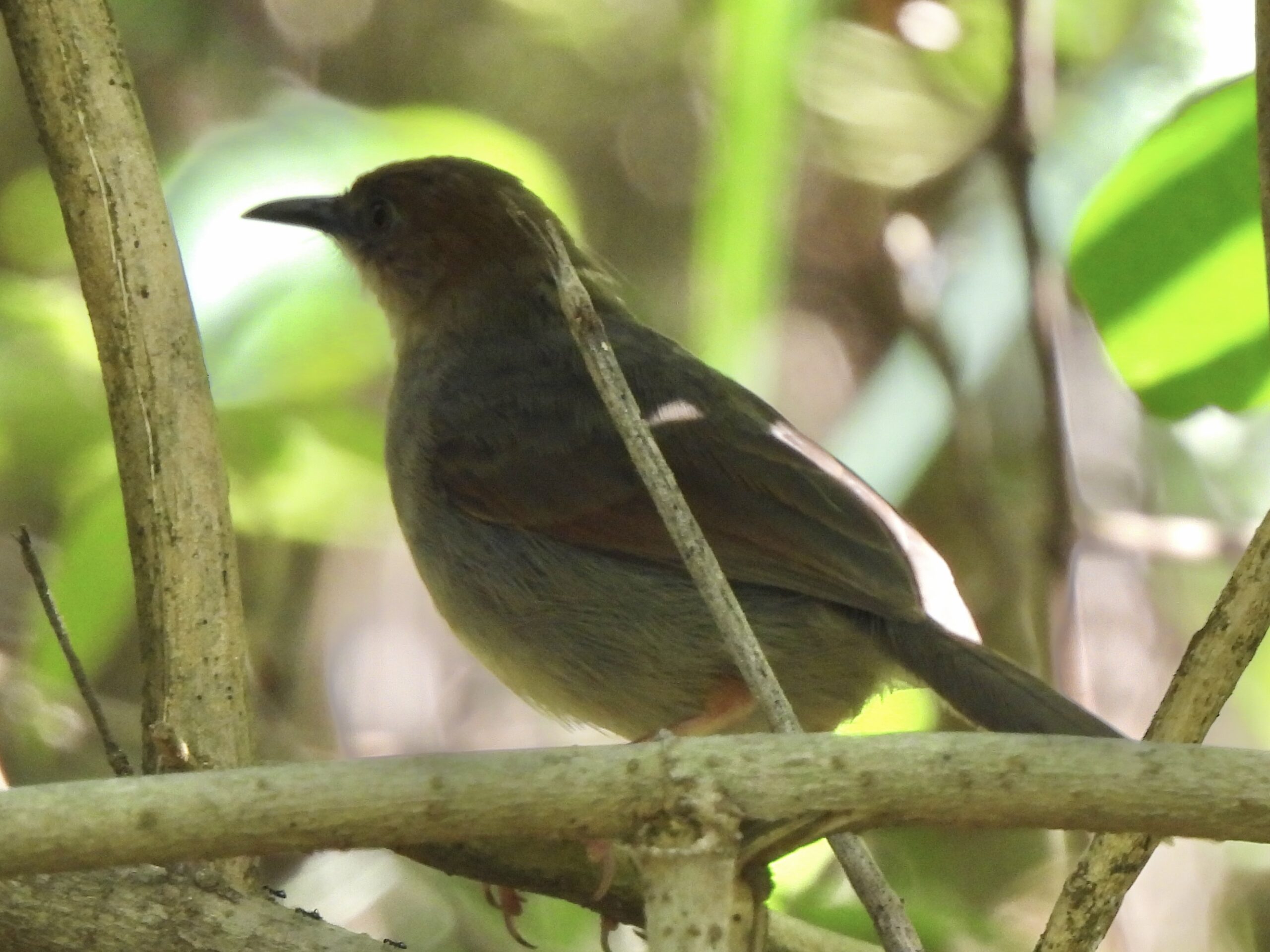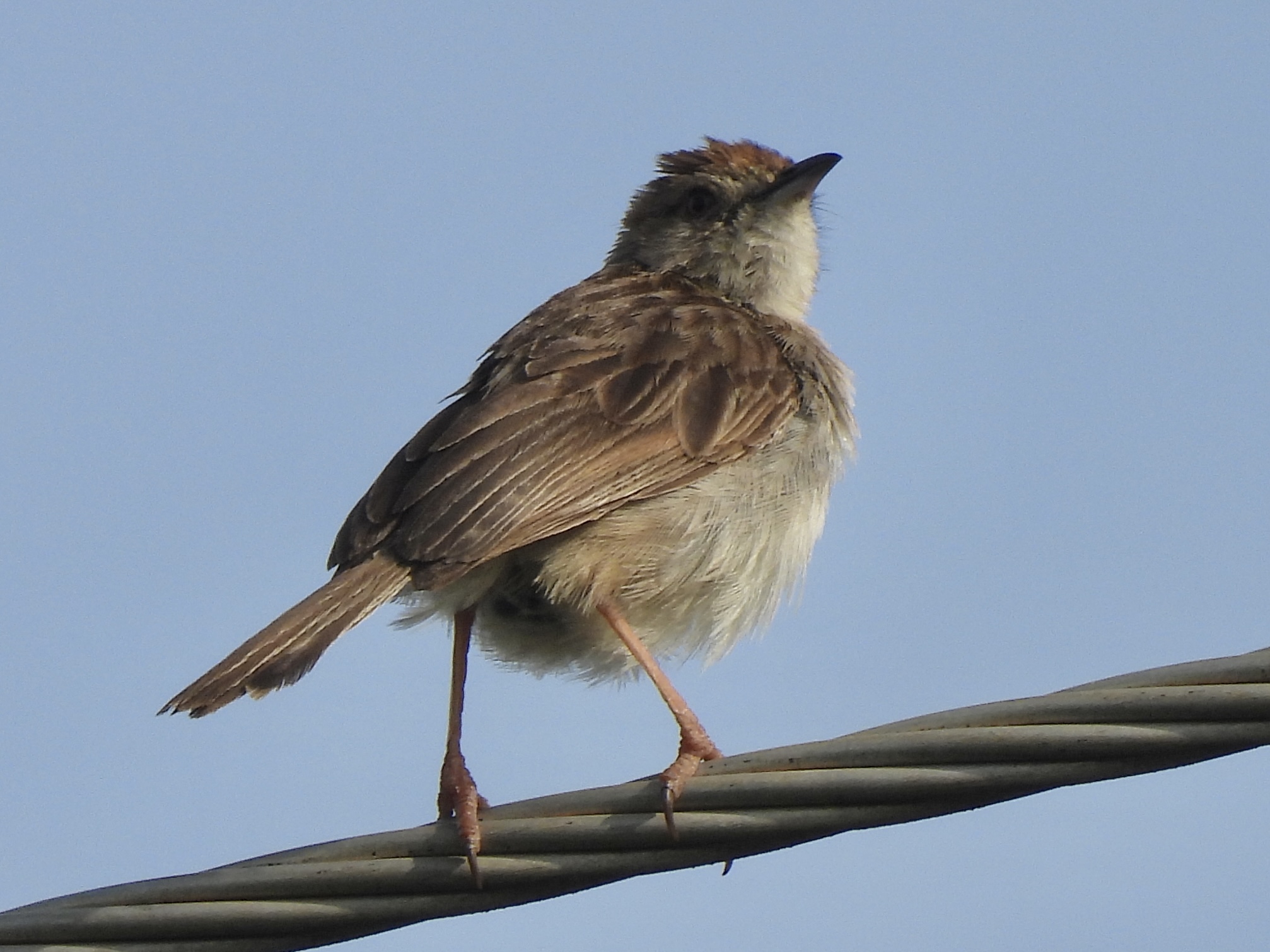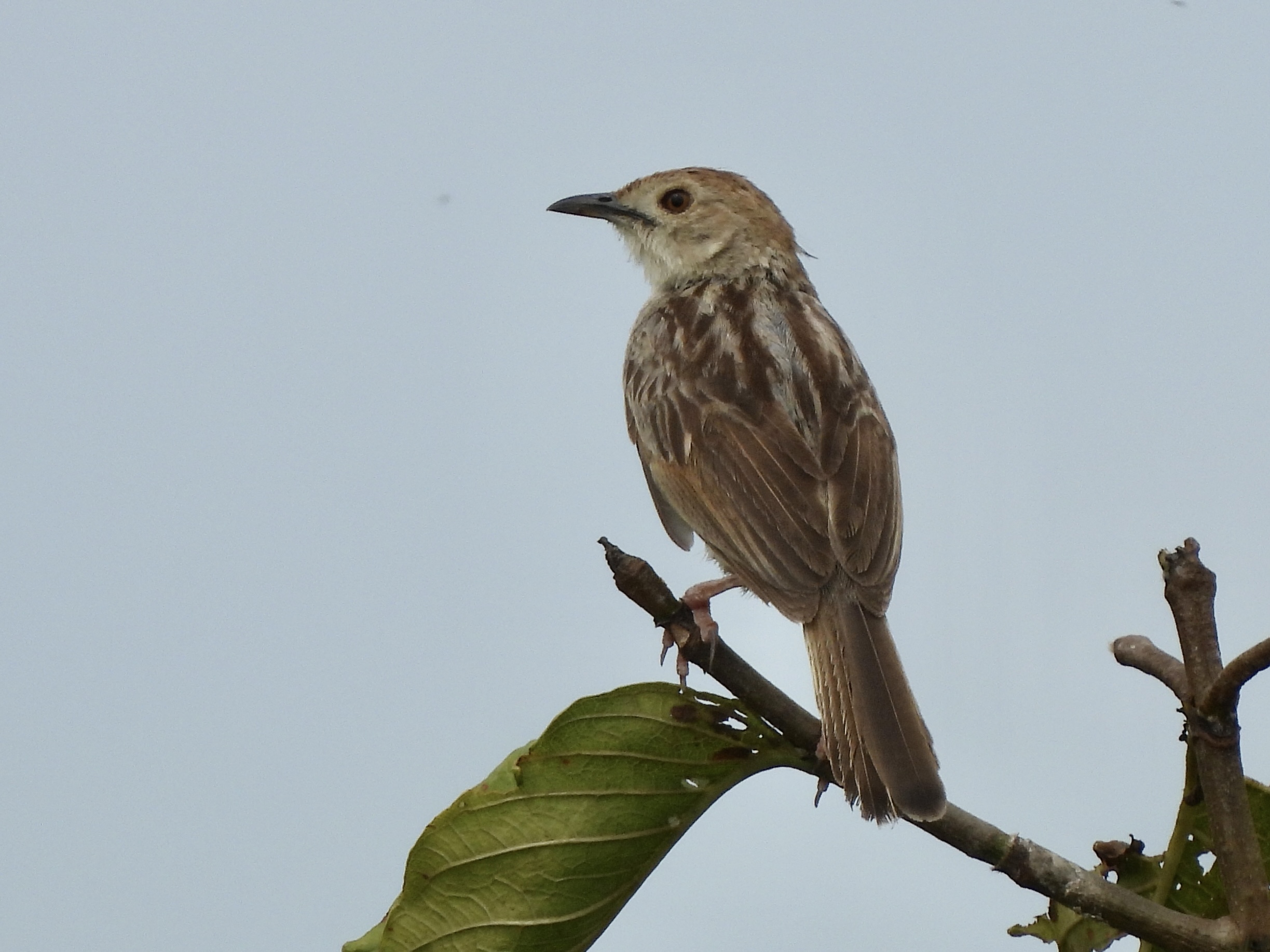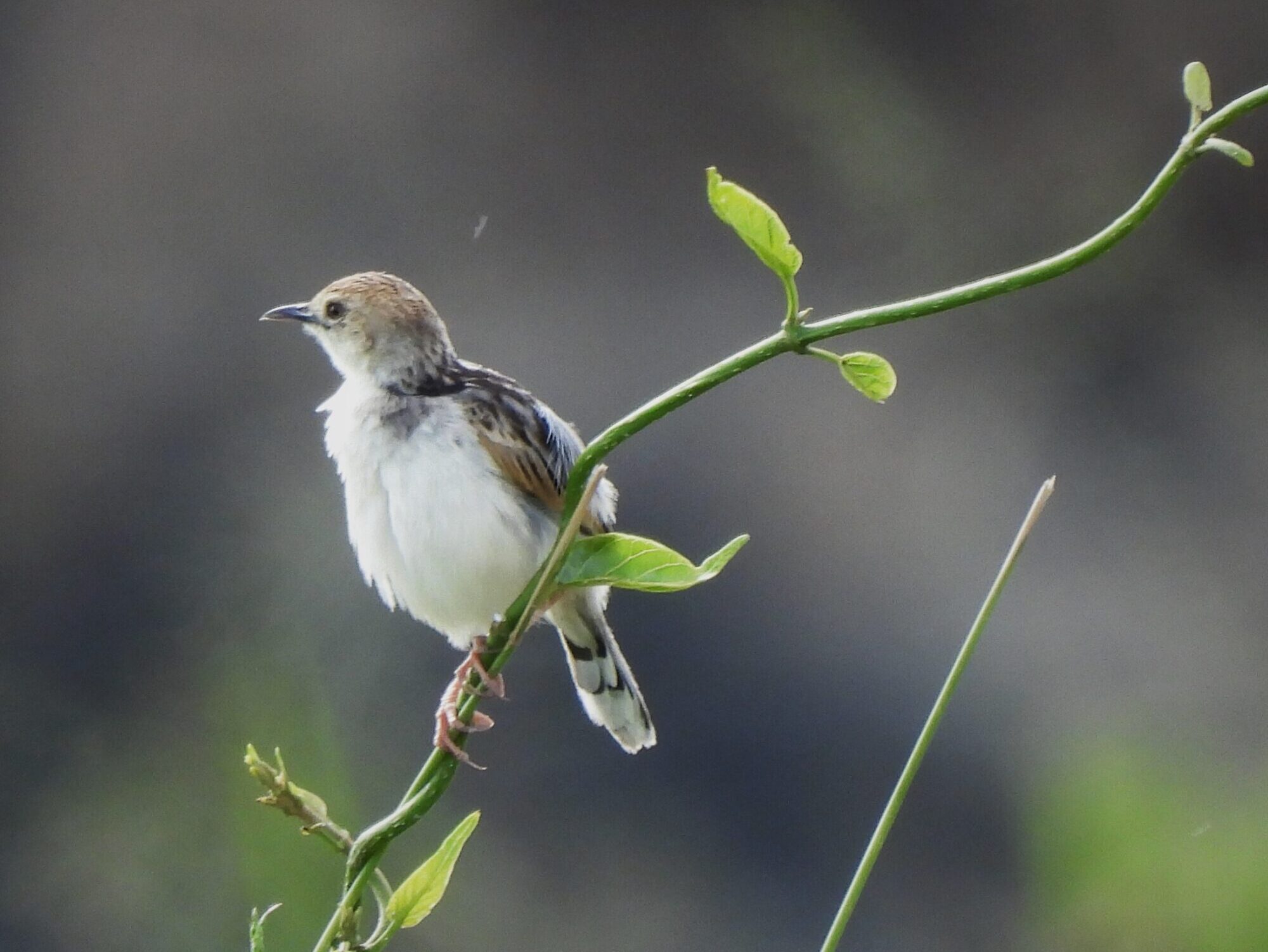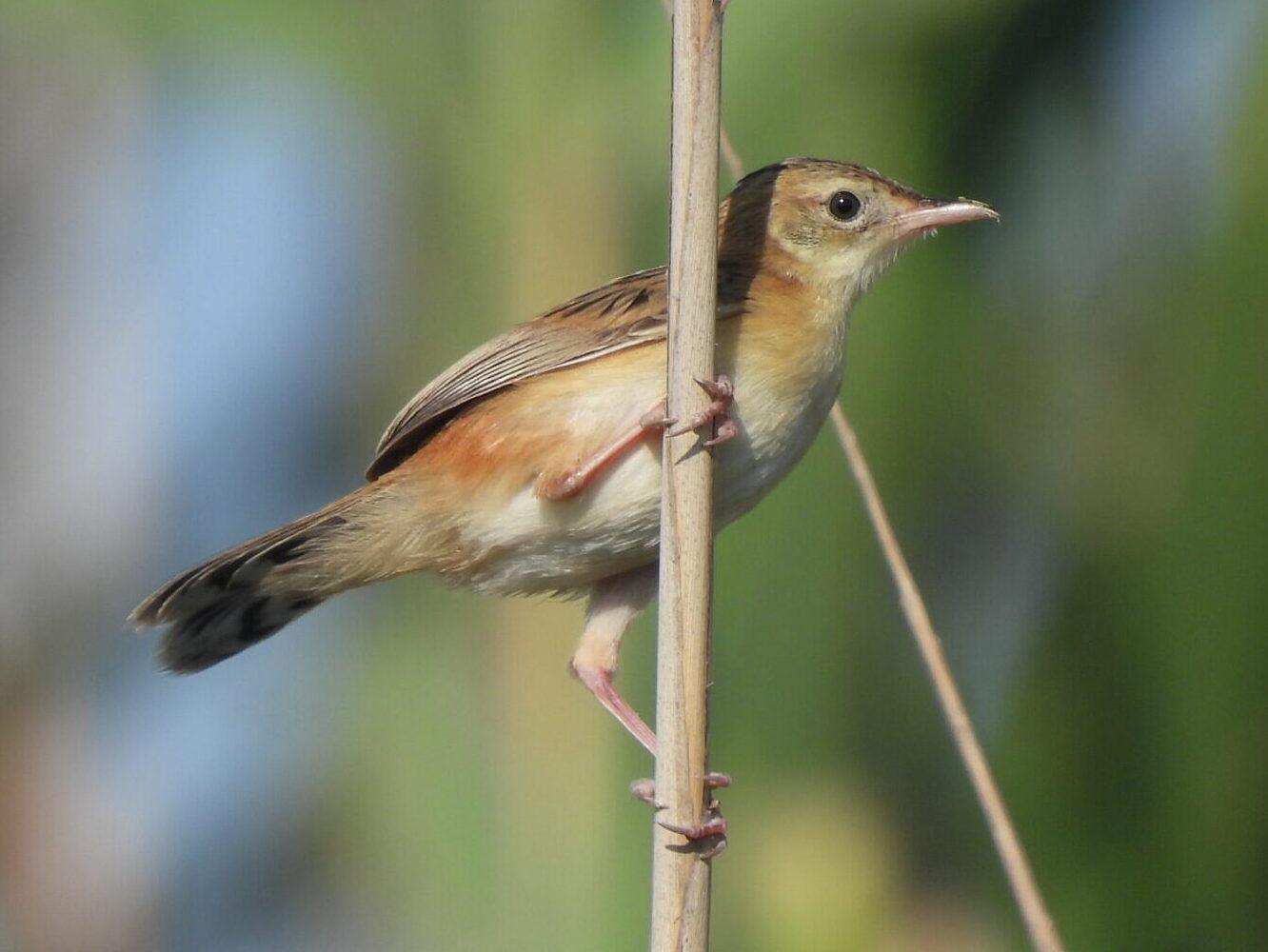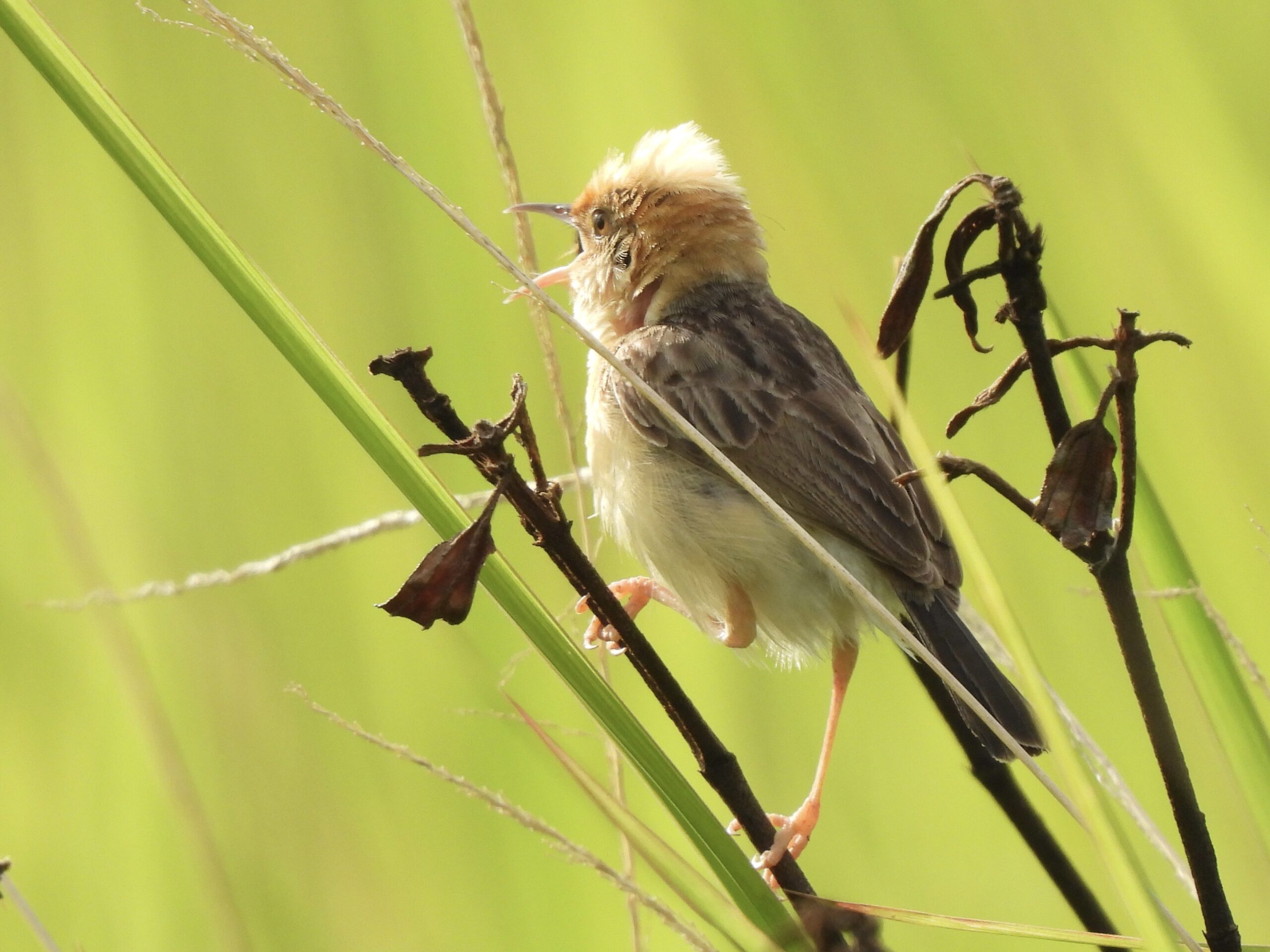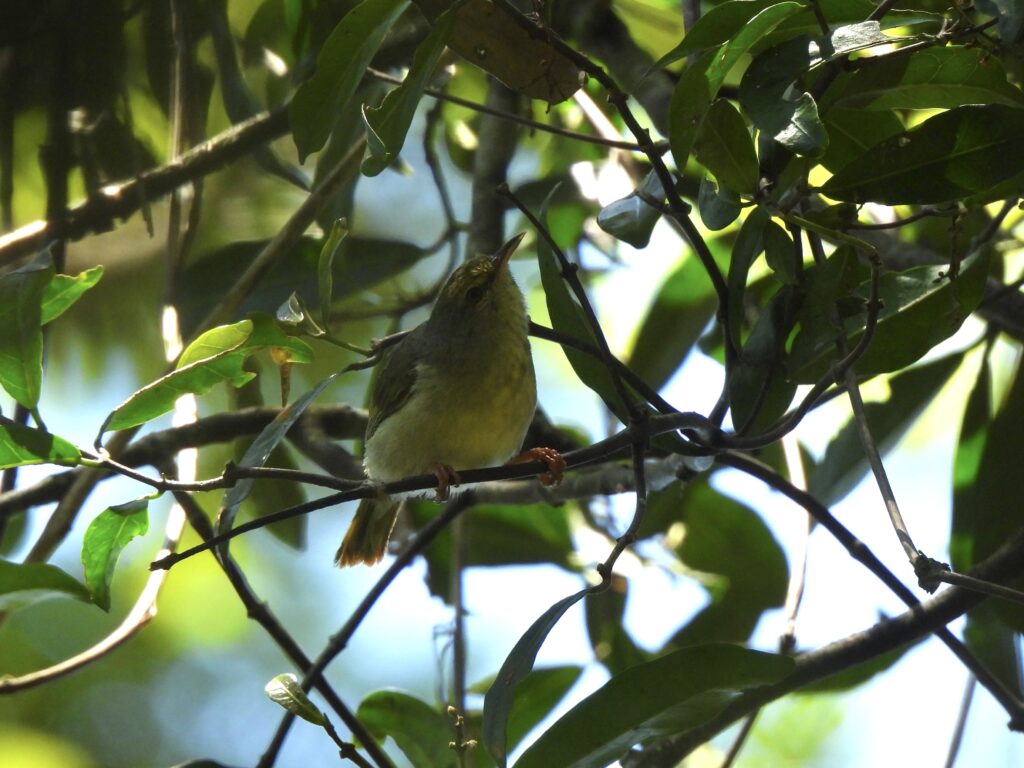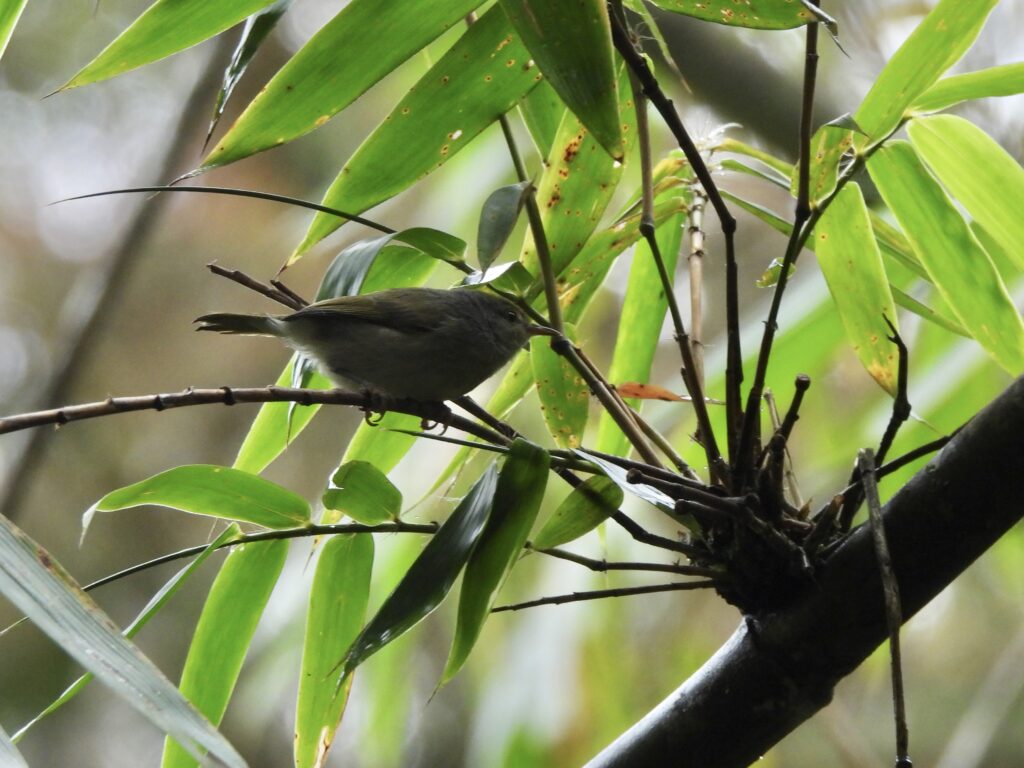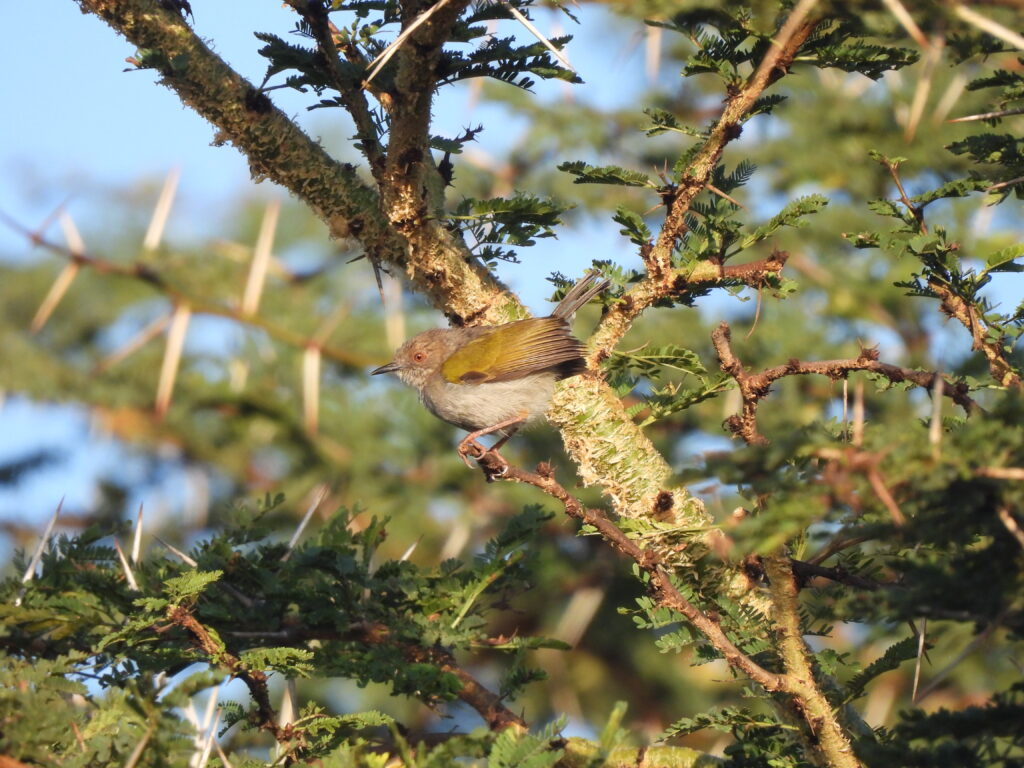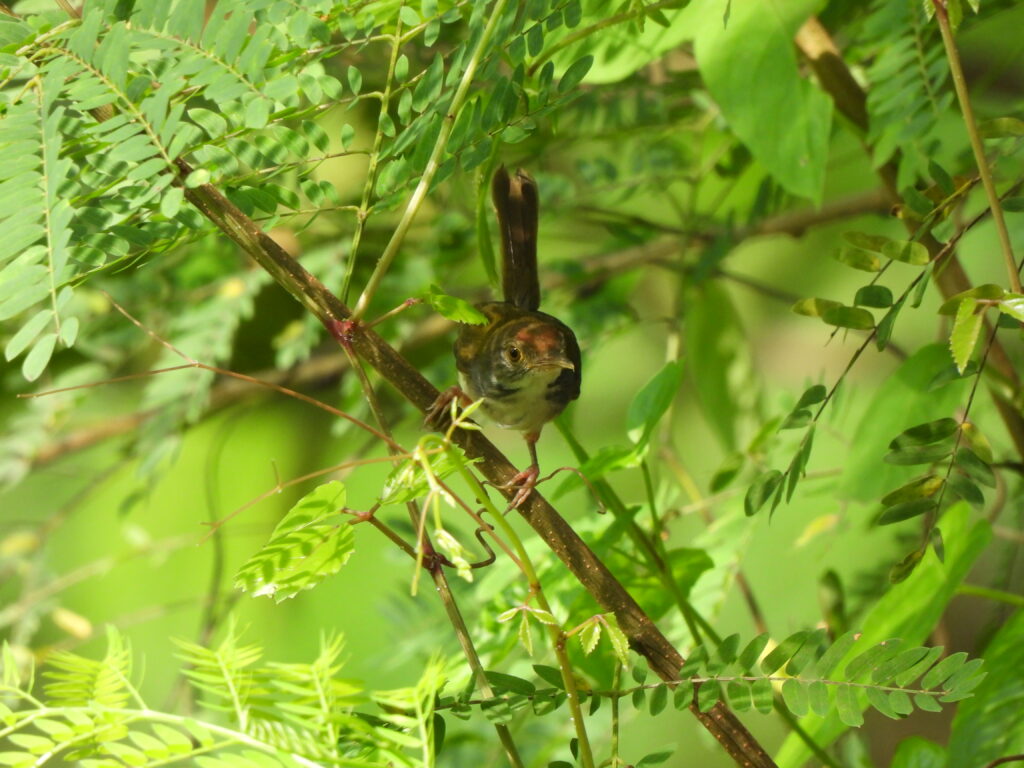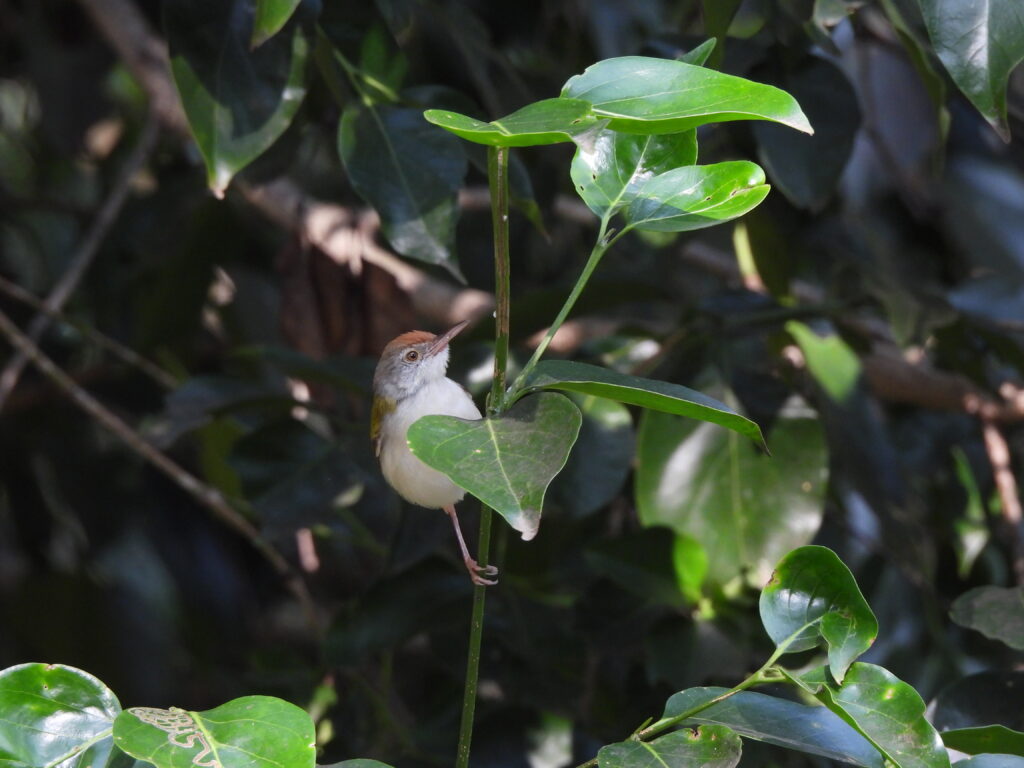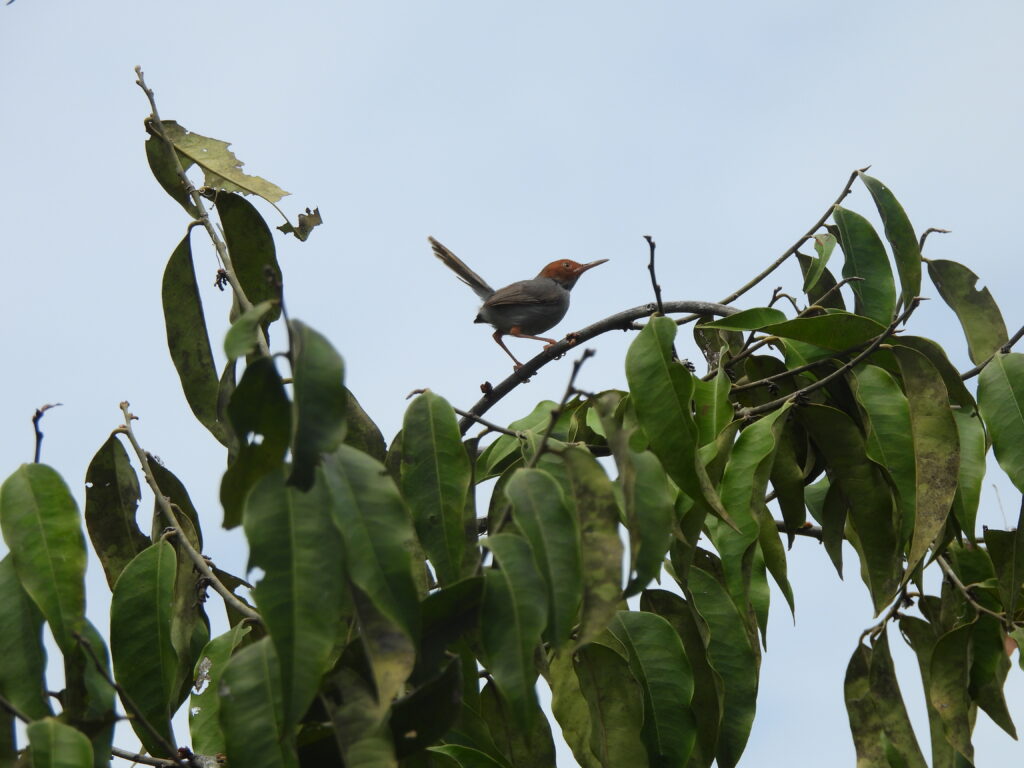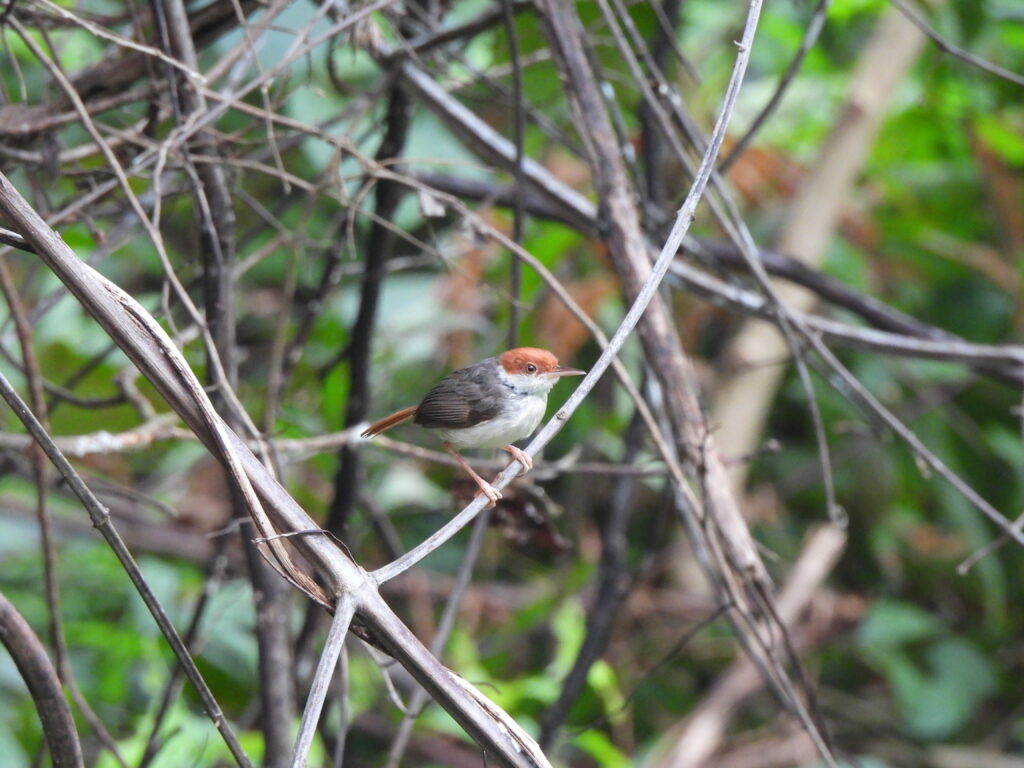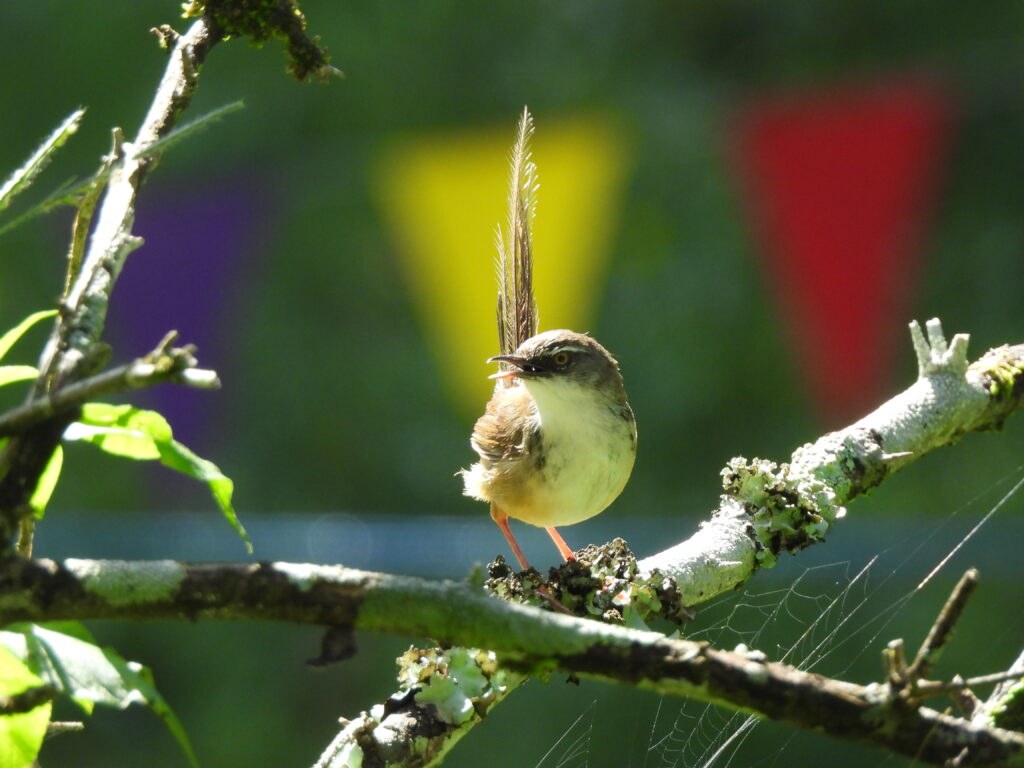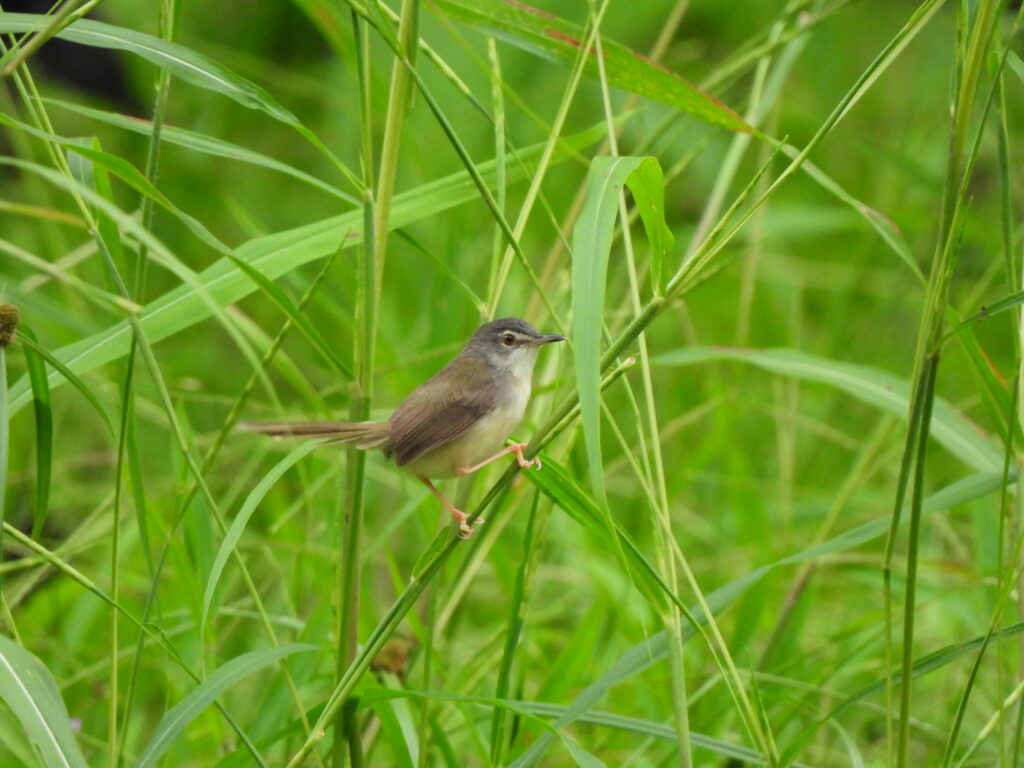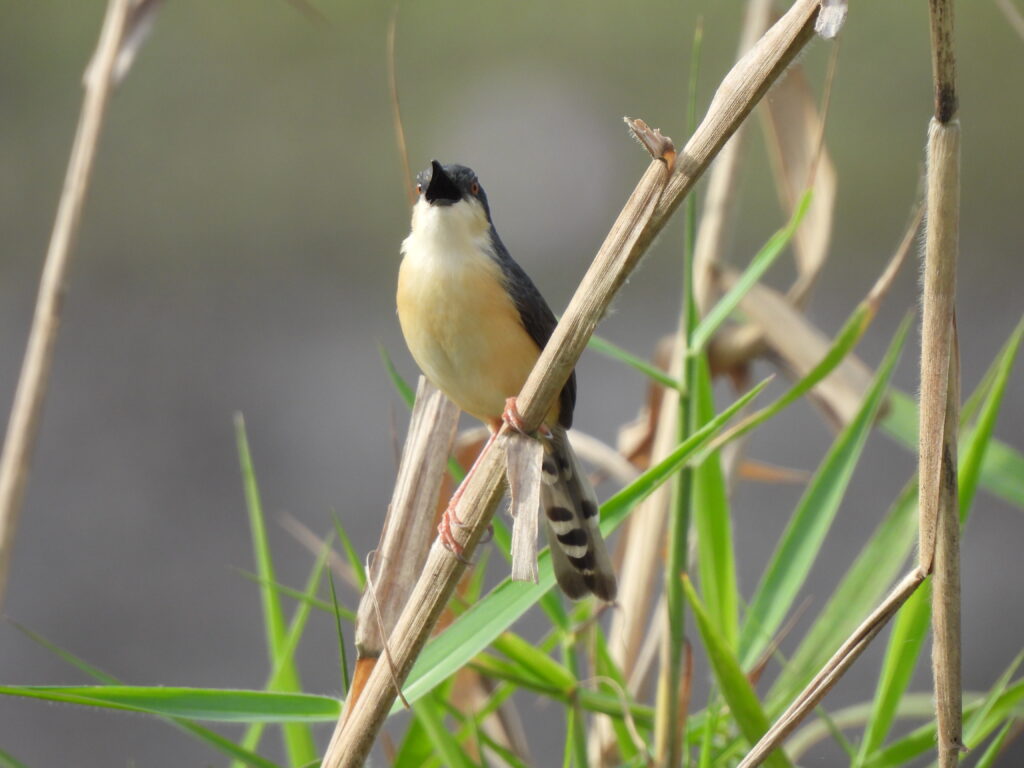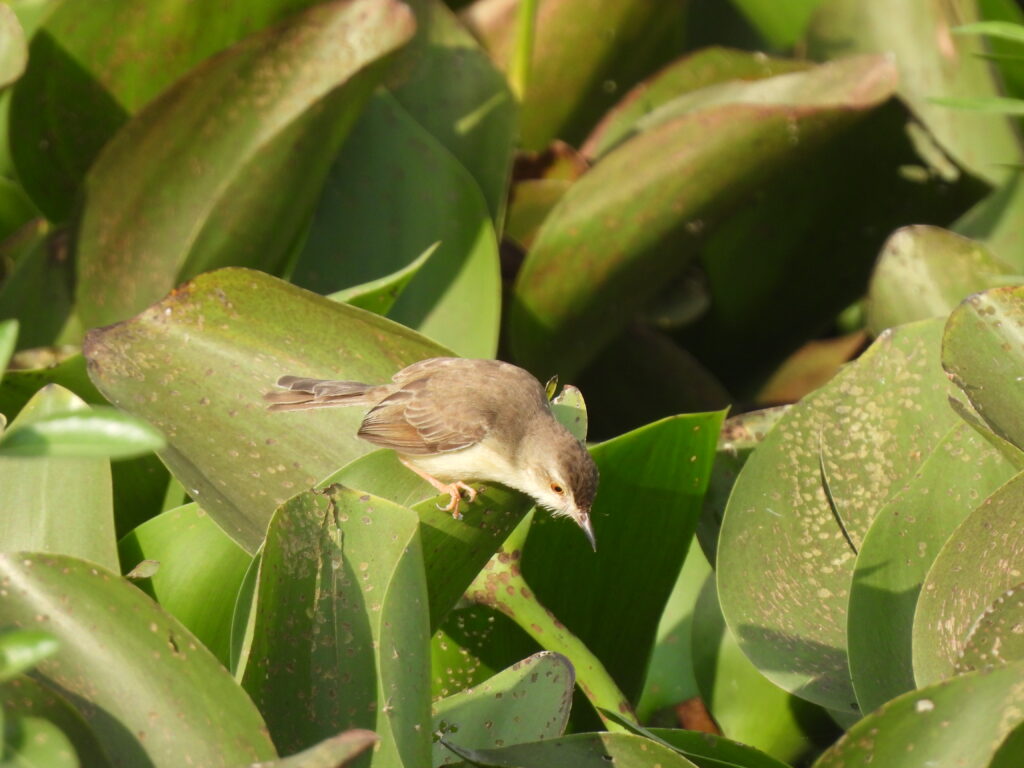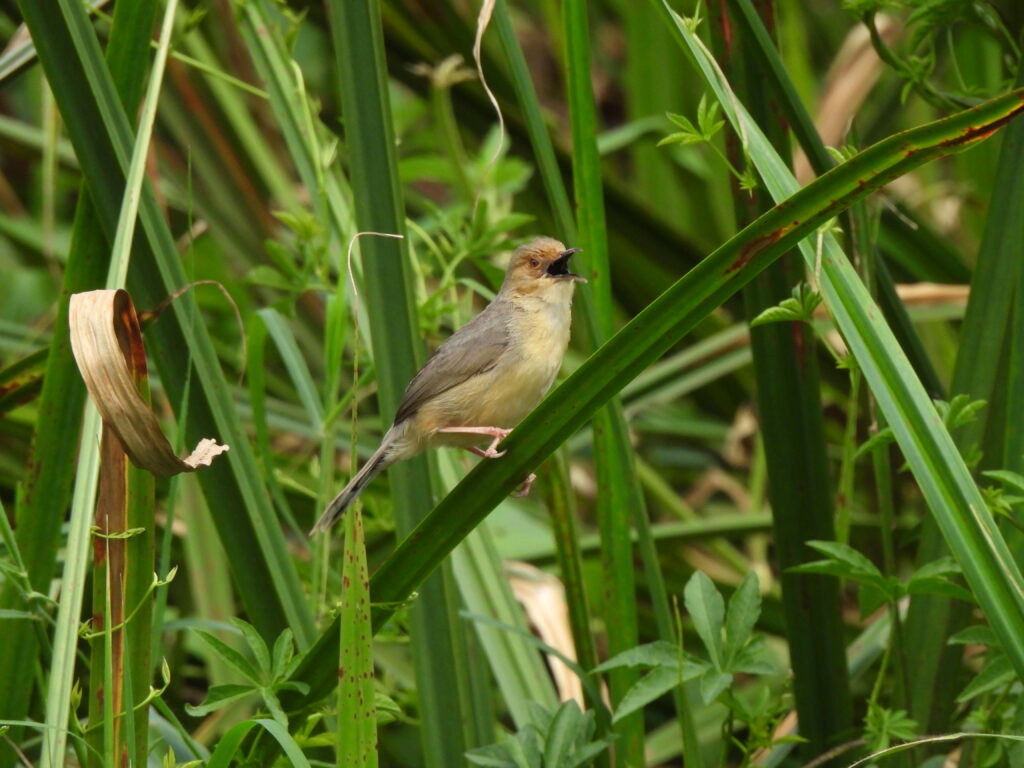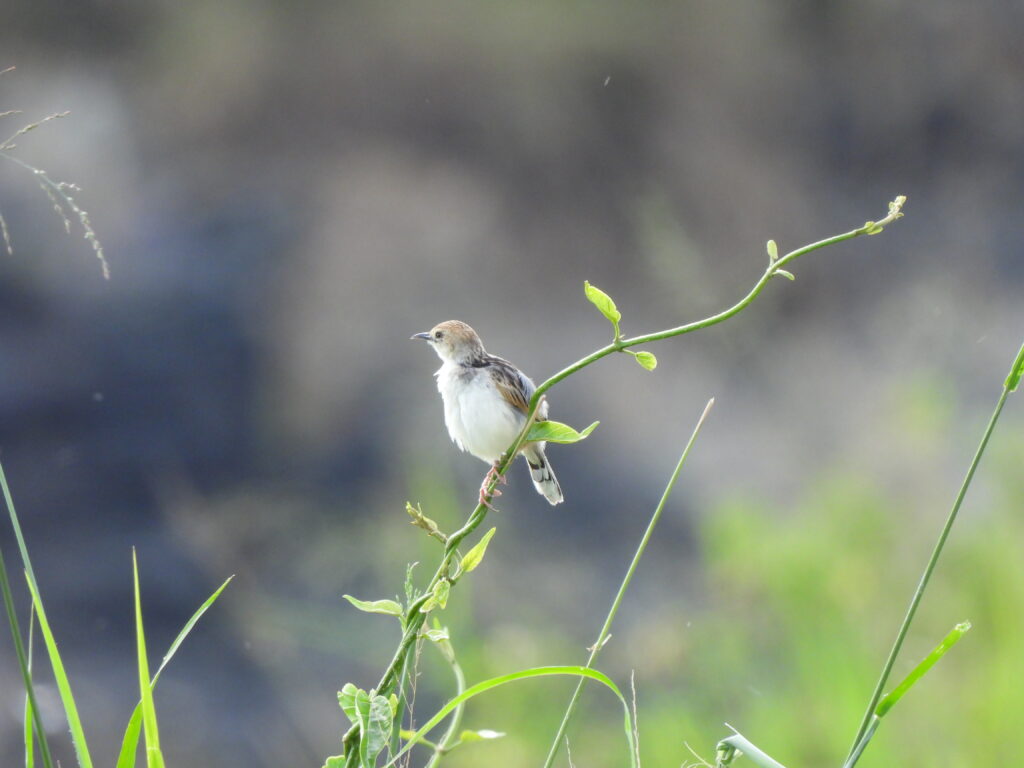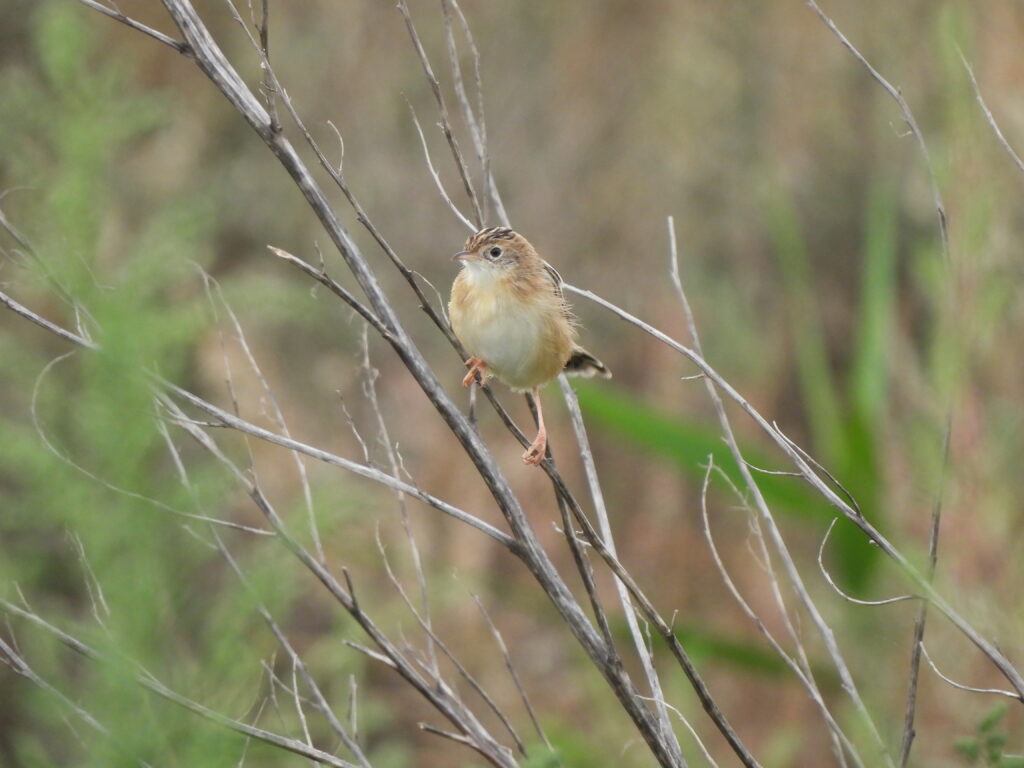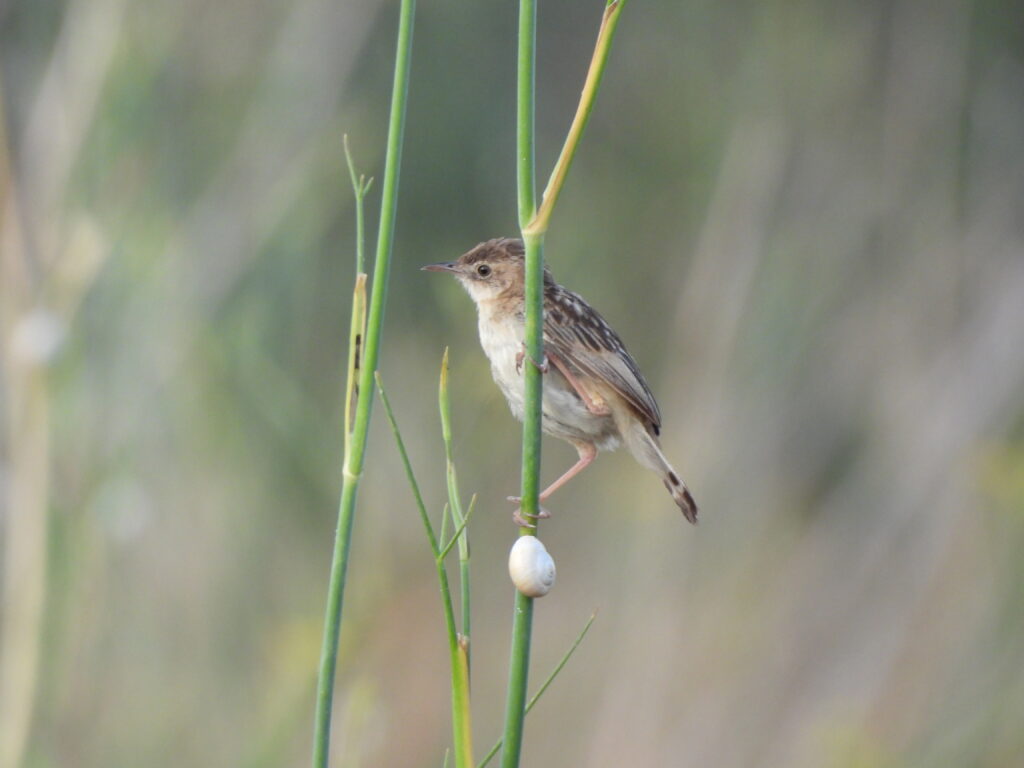The cisticolas, prinias and tailorbirds (family Cisticolidae) are a large and diverse family of birds belonging to the order Passeriformes, distributed across warm regions of the Old World. They are small, long-tailed, generally drab birds found in grasslands and scrub, except for some colorful species. Several species sport similar plumages but very distinctive calls and songs, which are the best trait to successfuly identify them.
The family comprises 163 species in 26 genera. Basal genus Neomixis (3 species) includes birds known as jeries endemic to Madagascar, whereas Micromacronus (2 species) is restricted to the Philippines and known as plumed-warblers. A number of small genera are endemic to the Afrotropical realm, including Drymocichla (1 species), Schistolais (2 species), Oreophilais (1 species), Phragmacia (1 species), Urolais (1 species), Artisornis (2 species), Poliolais (1 species), Calamonastes (4 species), Spiloptila (1 species), Phyllolais (1 species), Euryptila (1 species), Scepomycter (1 species), Incana (1 species), Malcorus (1 species), Hypergerus (1 species), Eminia (1 species) and Bathmocercus (2 species). Larger genera also restricted to Subsaharan Africa include the eremopteras in genus Eremoptera (10 species); the camaropteras in genus Camaroptera (4 species); and the apalis within genera Oreolais (2 species) and Apalis (25 species). Instead, the tailorbirds, belonging to genus Orthotomus (13 species), are restricted to the Indomalayan realm. The large genera Prinia (29 species), including birds known as prinias, and Cisticola (53 species), commonly known as cisticolas, are both distributed all across the Old World, including the only species of the family found in Europe within the last genus.
Common jery
Neomixis tenella
Endemic to most forested areas of Madagascar, where it is the most widespread of all three jeries. Small and energetic, and often found on mixed-species flocks. I have seen this species in Madagascar.
Bleating camaroptera
Camaroptera brachyura
Found in scrub and savanna across Subsaharan Africa, with a ‘green-backed‘ brachyura form distributed along east Africa and a ‘gray-backed‘ brevicaudata widespread elsewhere. I have encountered this species in Kenya.
Buff-bellied warbler
Phyllolais pulchella
Distributed in the dry savanna along the Rift Valley and some areas in Sahel. Inconspicuous, plain and small inhabitant of Acacia trees. I have encountered this species in Nairobi city in Kenya.
Yellow-breasted apalis
Apalis flavida
Found in forest edge across Subsaharan Africa. Slender, long-tailed and featuring a red eye and a yellow chest with a variable black band. I have briefly seen this species in Kenya.
Black-headed apalis
Apalis melanocephala
Distributed along midland moist scrub and coastal rainforest in east Africa. I have seen this species in a mixed-species flock in Arabuko Sokoke forest in Kenya.
Common tailorbird
Orthotomus sutorius
Very common garden bird along the Indian Subcontinent and south China south to the Malay Peninsula and Java. Its song is a usual part of the soundscape of many Asian towns. I have observed this species in Singapore, Borneo, Vietnam, Thailand and India.
Dark-necked tailorbird
Orthotomus atrogularis
Found in lowland forests and gardens of Indochina and some parts of Borneo and Sumatra. As other tailorbirds, usually skulky and best detected by its song. I have seen this species in Vietnam.
Ashy tailorbird
Orthotomus ruficeps
Found in mangrove and lowland forests of the Malay Peninsula, the south tip of Indochina, and patchily in Borneo, Java and Sumatra. Sexes have different throat colors. I have encountered this species in Singapore and Borneo.
Rufous-tailed tailorbird
Orthotomus sericeus
Inhabitant of forest edge in the Malay Peninsula, Borneo, Sumatra and Palawan. Although it usually stays in the dense scrub, it sometimes behaves as a flycatcher. I have seen this species in Borneo and the Philippines.
Hill prinia
Prinia superciliaris
Distributed along montane scrub and forest edge in south China and north Indochina with disjunct populations in Da Lat plateau in Vietnam, in the highest peak of Peninsular Malaysia and in west Sumatra. Large, with a very long tail. I have seen this species in Da Lat in Vietnam.
Rufescent prinia
Prinia rufescens
Distributed along grassland and open areas of Indochina and the Malay Peninsula. As other prinias, it is a small bird with a strong presence due to the loudness of its song. I have seen this species in Vietnam.
Gray-breasted prinia
Prinia hodgsonii
Distributed along scrub vegetation of fores edge across the Indian Subcontinent and Indochina. Dark in color only during the breeding season. I have seen this species in Hanoi in Vietnam.
Delicate prinia
Prinia lepida
Mostly found in oasis areas along dry country from south Turkey aeast to Assam in India. Very similar to the graceful prinia, which has a close contact range in some areas of the Persian Gulf. I have seen this species in Qatar and Dubai.
Yellow-bellied prinia
Prinia flaviventris
Common in grassy areas of southeast Asia, east to the Indus River, noth to Taiwan and Zhejiang in China and south to Borneo, Sumatra and Java. I have seen this species in Borneo and Vietnam.
Ashy prinia
Prinia socialis
Distributed across the Indian Subcontinent in good numbers in most areas. Relatively confiding and fearless, singing in wires and twigs in the open. I have seen this species in the backwaters of south India.
Tawny-flanked prinia
Prinia subflava
Widespread along Subsaharan Africa, occurring along scrub and grassy areas of many different habitats. Plain and long-tailed, skulking through the low vegetation. I have seen this species in Kenya.
Plain prinia
Prinia inornata
Distributed along open areas of the Indian Subcontinent, Indochina, Java and east China. Common across numerous habitats, where its insect-like call is part of the soundscape. I have seen this species in Thailand and India.
Red-faced cisticola
Cisticola erythrops
Found in thick vegetation adjacent to water bodies of Subsaharan Africa. Overal reddish and otherwise plain plumage, but its complex song draws attention. I have seen this species in a wetland of Nairobi in Kenya.
Singing cisticola
Cisticola cantans
Found in lush habitat and moist savanna of east and west Africa. Very similar to the red-faced cisticola but has a dark-brown head and rufous wing panels. I have encountered this species in a wetland of Nairobi in Kenya.
Rattling cisticola
Cisticola chiniana
Found in savanna and scrub of uplands in east and south Africa. Quite bold and fierce, singing from exposed wires and mobbing large predators. I have seen this species in different areas of Kenya.
Winding cisticola
Cisticola marginatus
Mostly inhabiting wetlands and moist scrub of east and west Africa. Its bold brown back markings are quite distinctive. I have observed this species in different areas of Kenya.
Stout cisticola
Cisticola robustus
Found in lush grassland of central Africa. Rufous head and a bold black-marked back, and a distinctive song made up of different notes followed by a buzz. I have seen this species in Kenya.
Zitting cisticola
Cisticola juncidis
Widespread in prairies and grassy areas across the Old World, from the Iberian Peninsula to Japan south to South Africa and Australia. This species is a common residen in Alicante; I have also seen it in Kenya and Singapore.
Golden-headed cisticola
Cisticola exilis
Found in grasslands along a patchy distribution from south India and the Himalayas through Indochina and Indonesia, east to Australia. Only breeding males sport the golden head. I have observed this species in Thailand.

